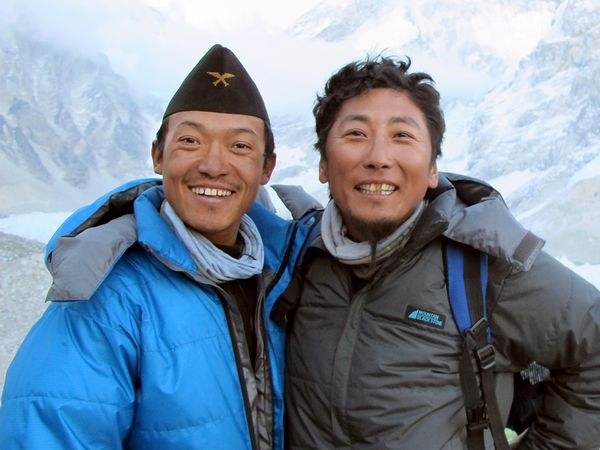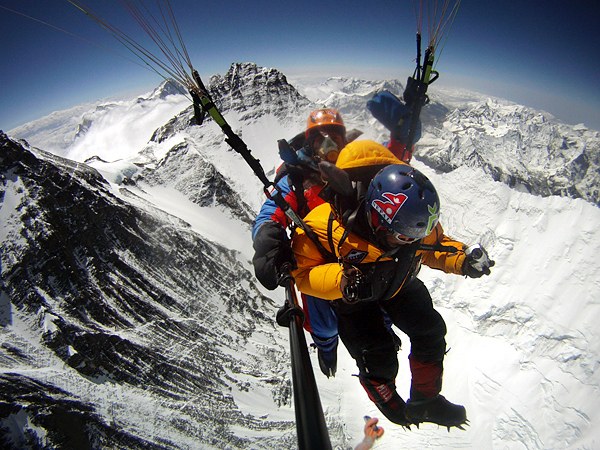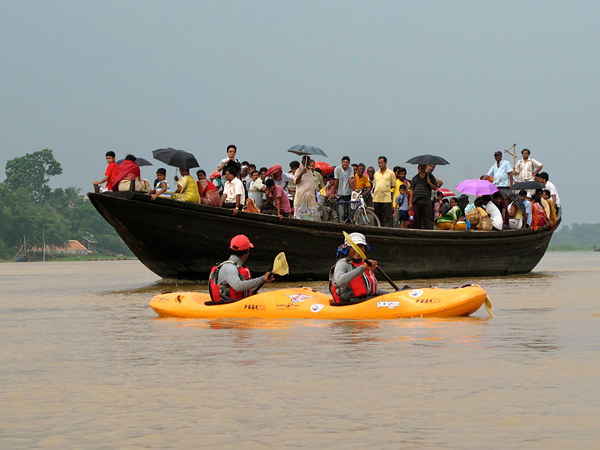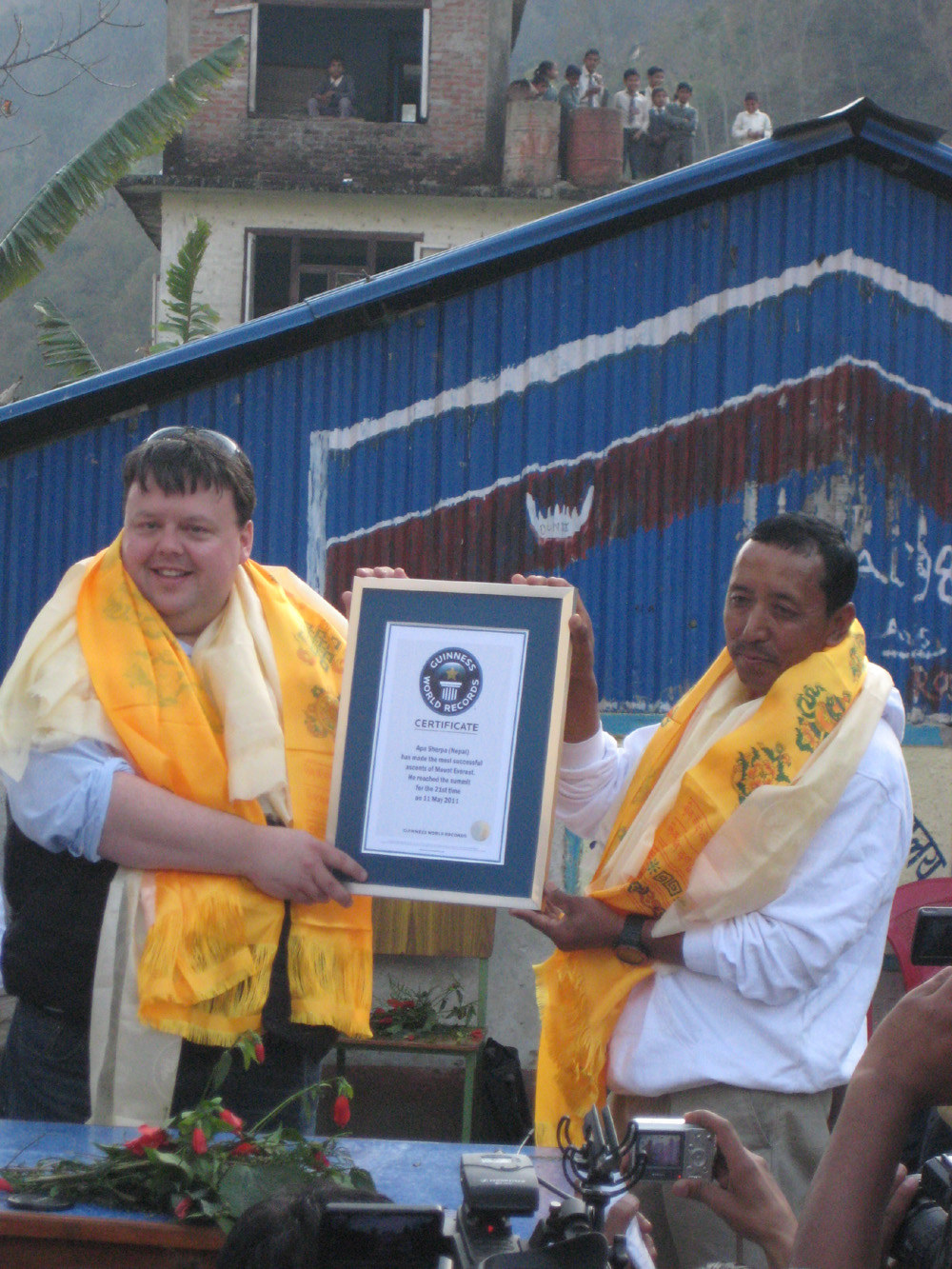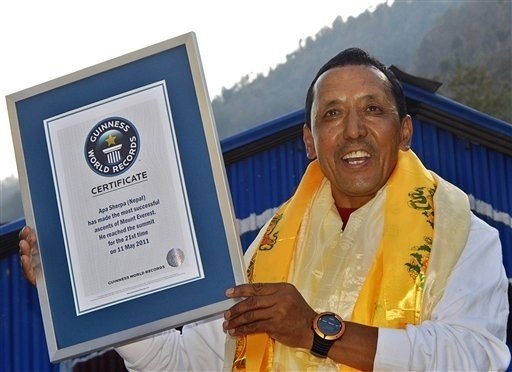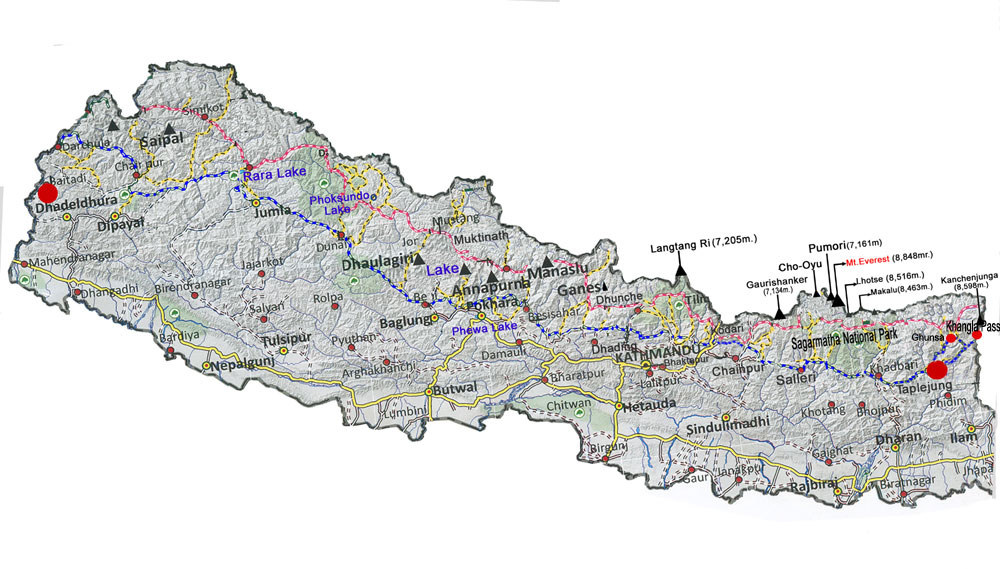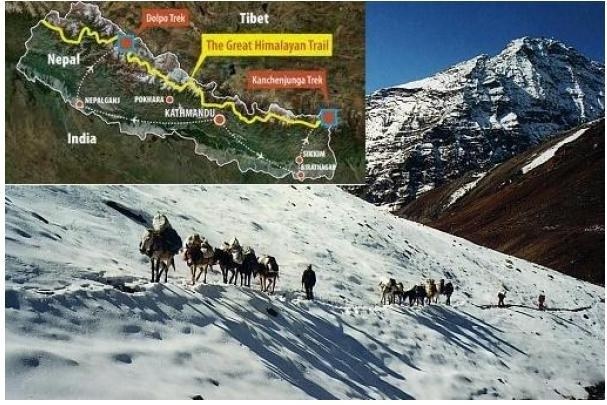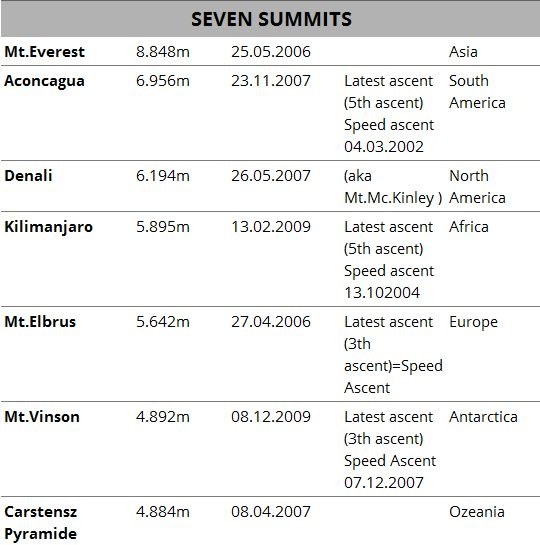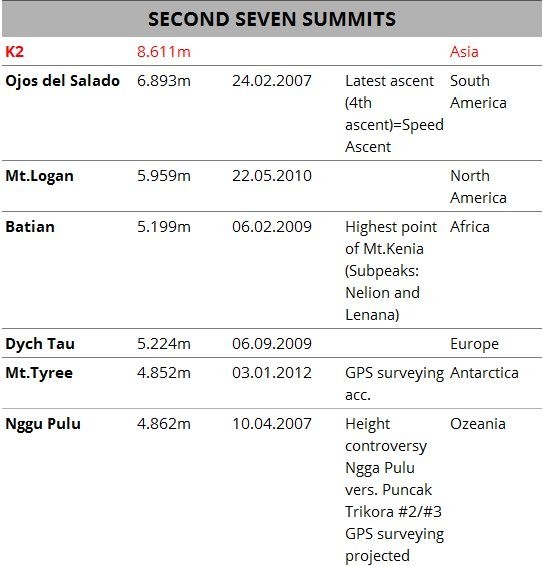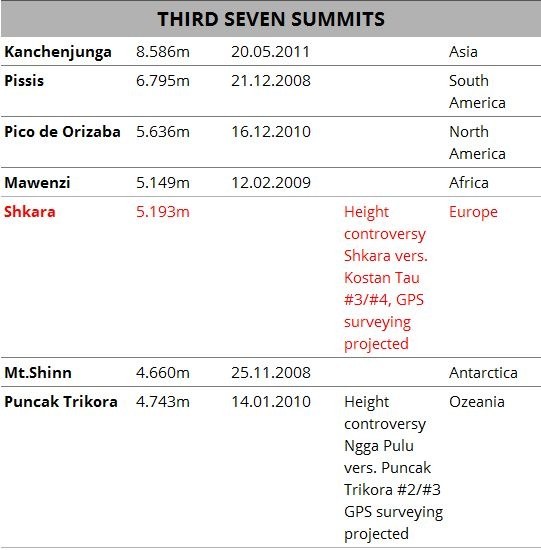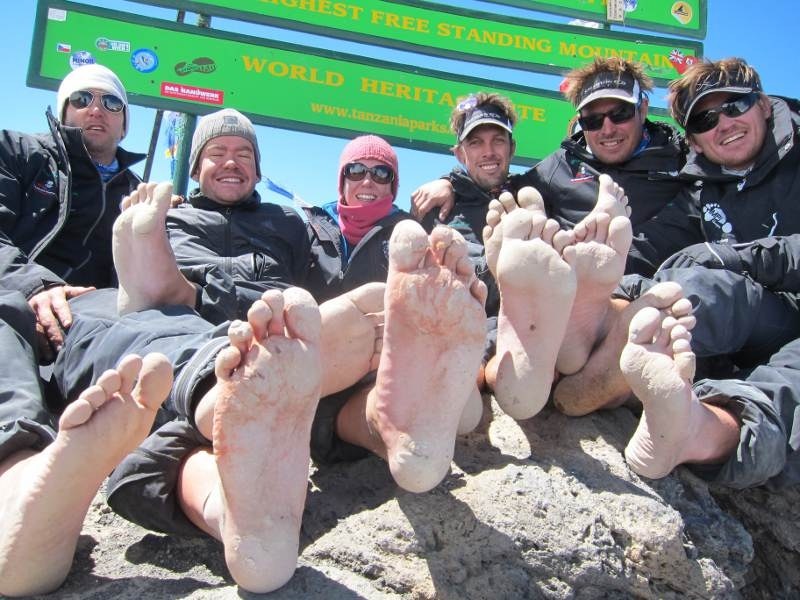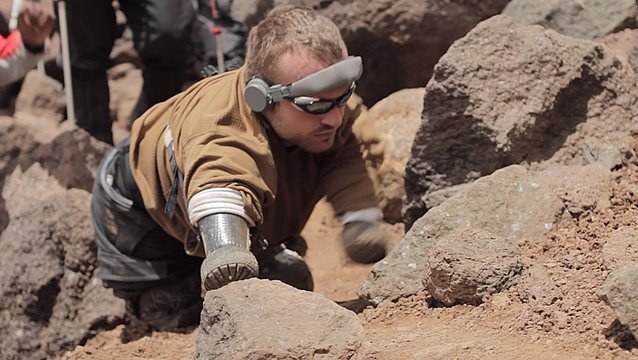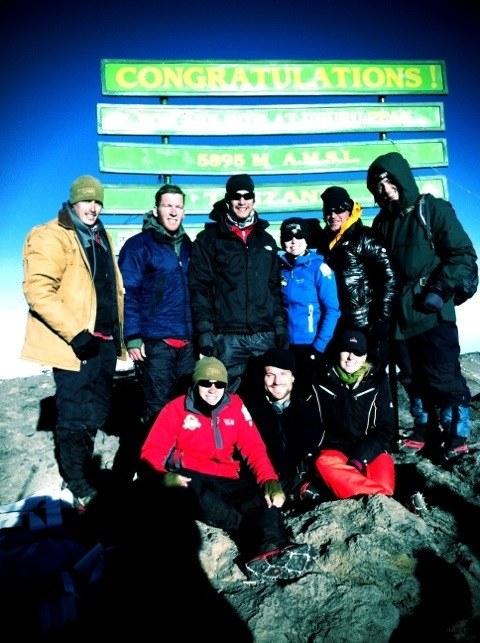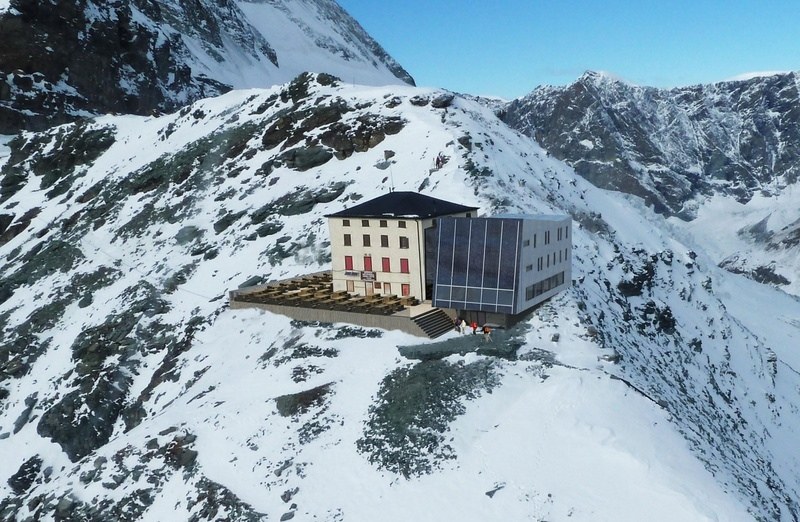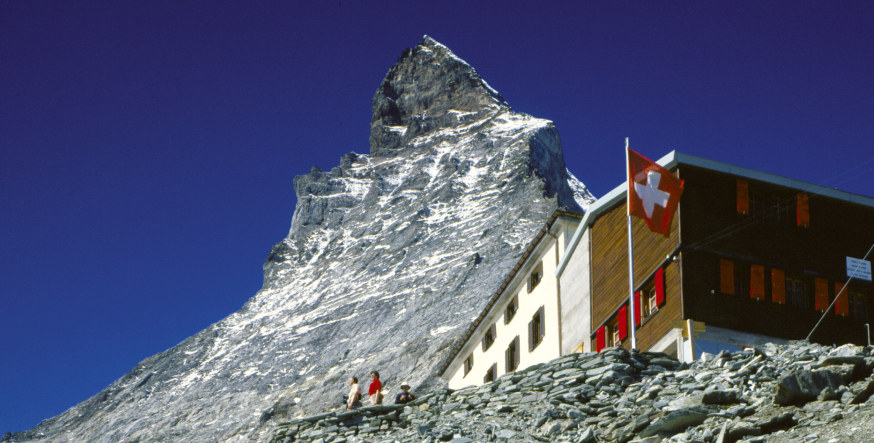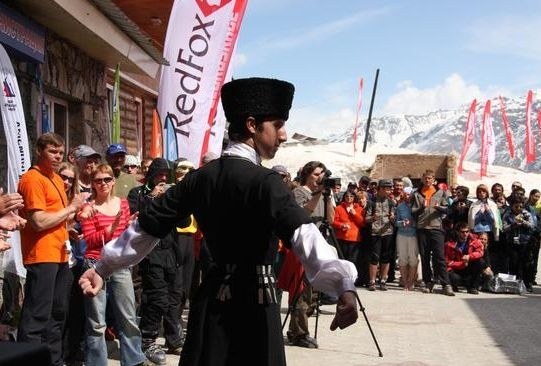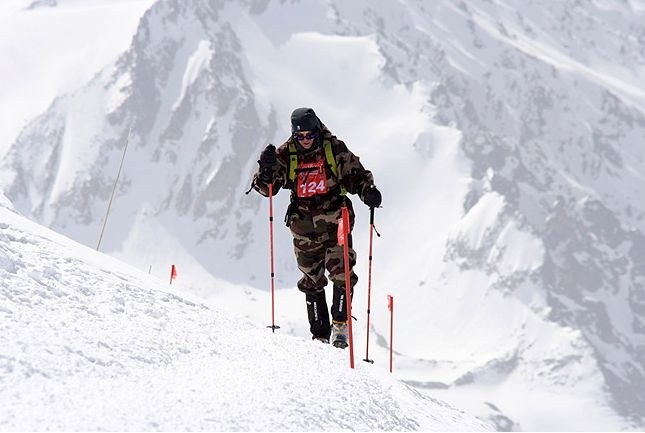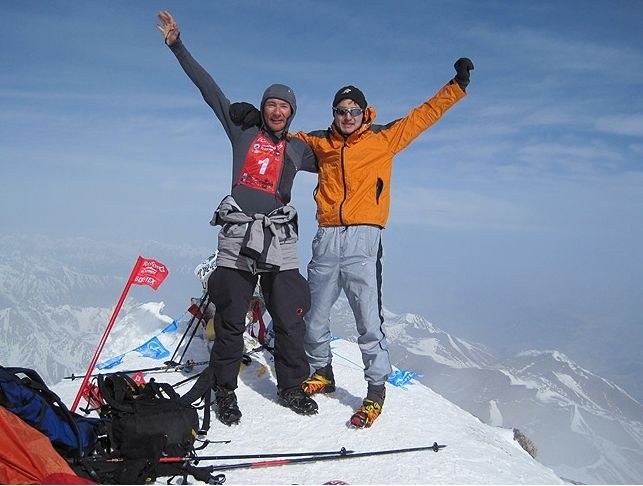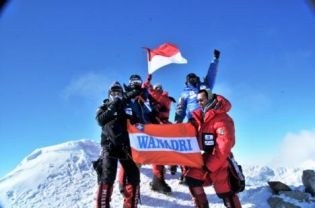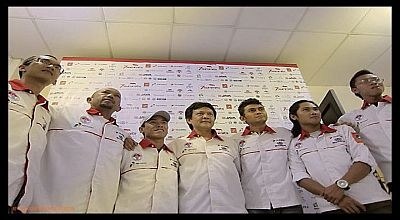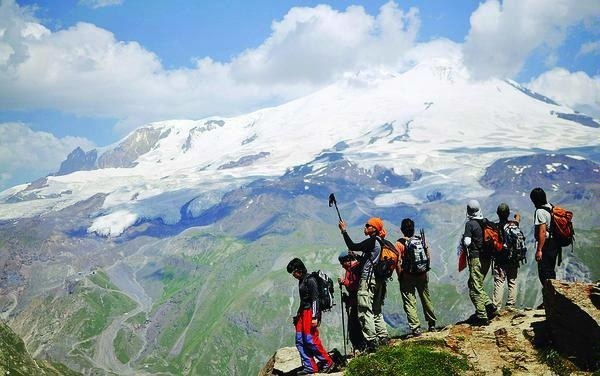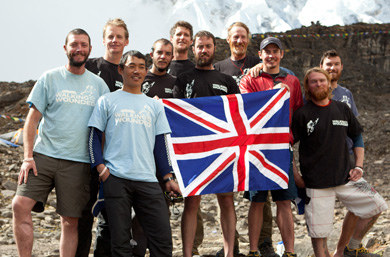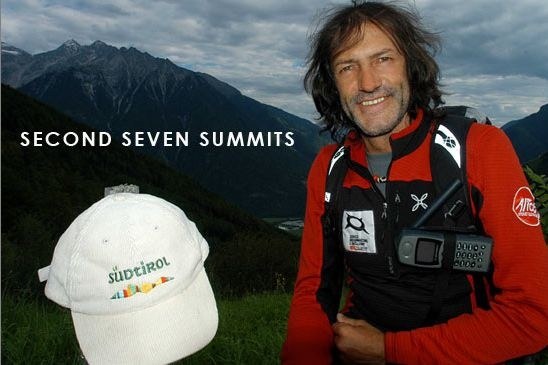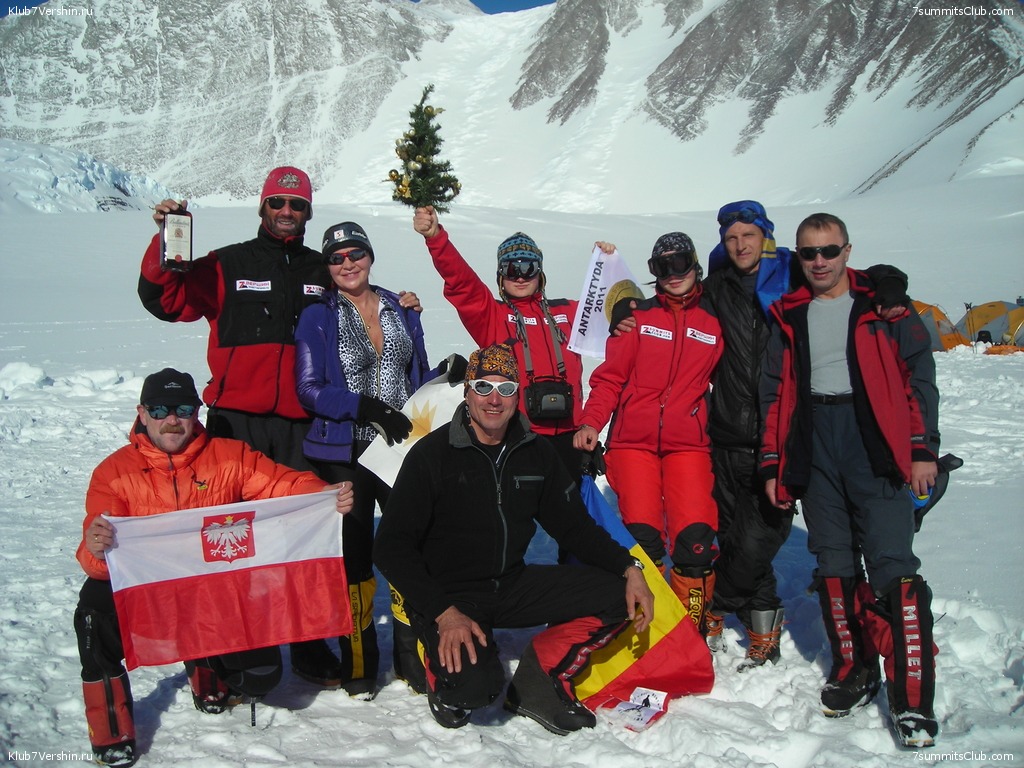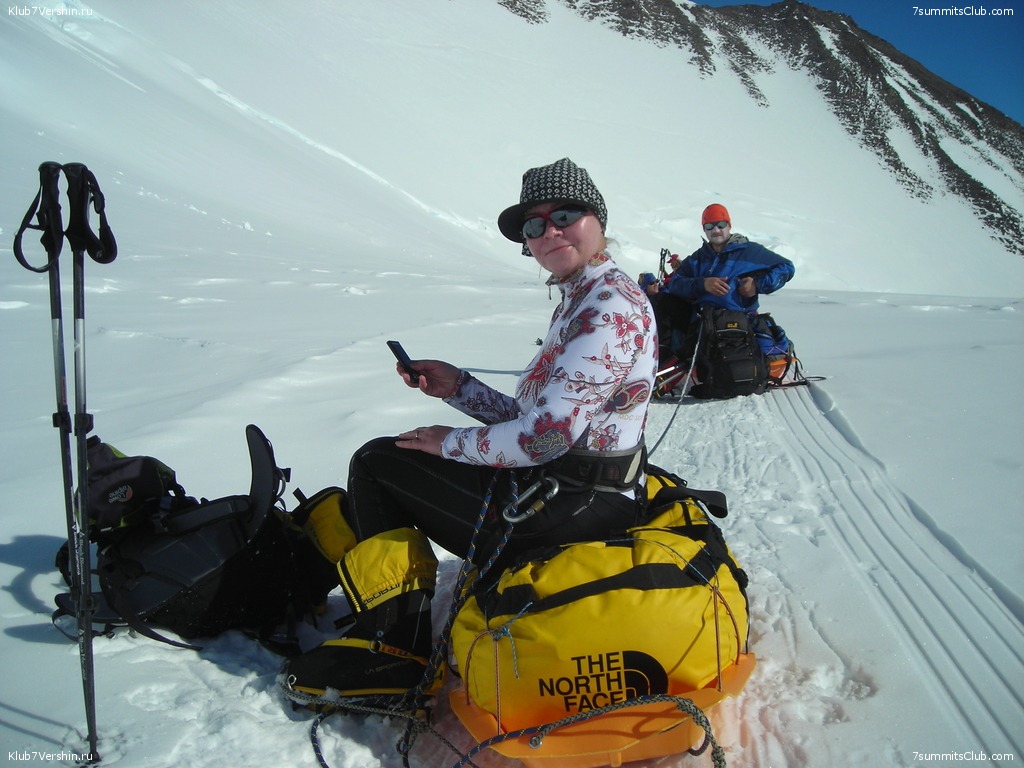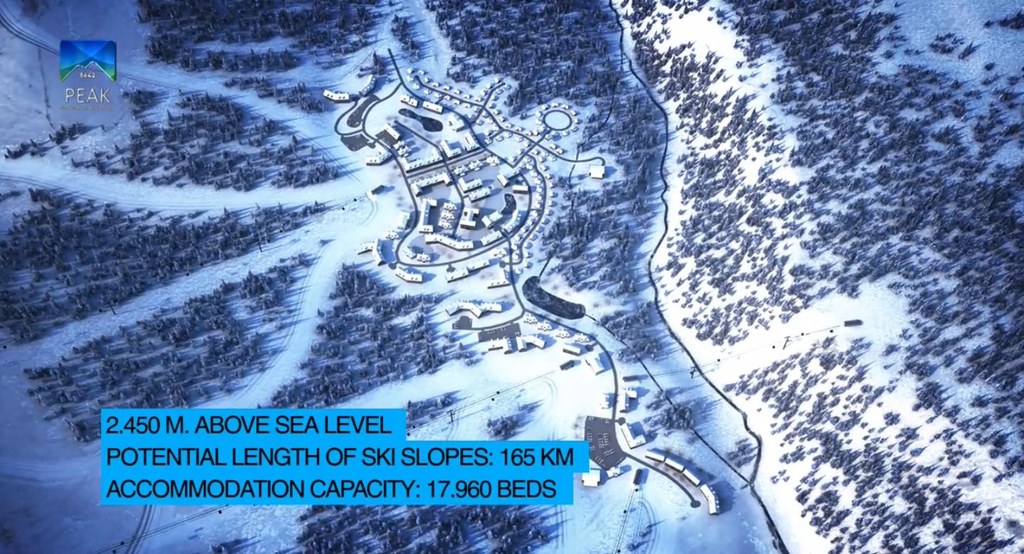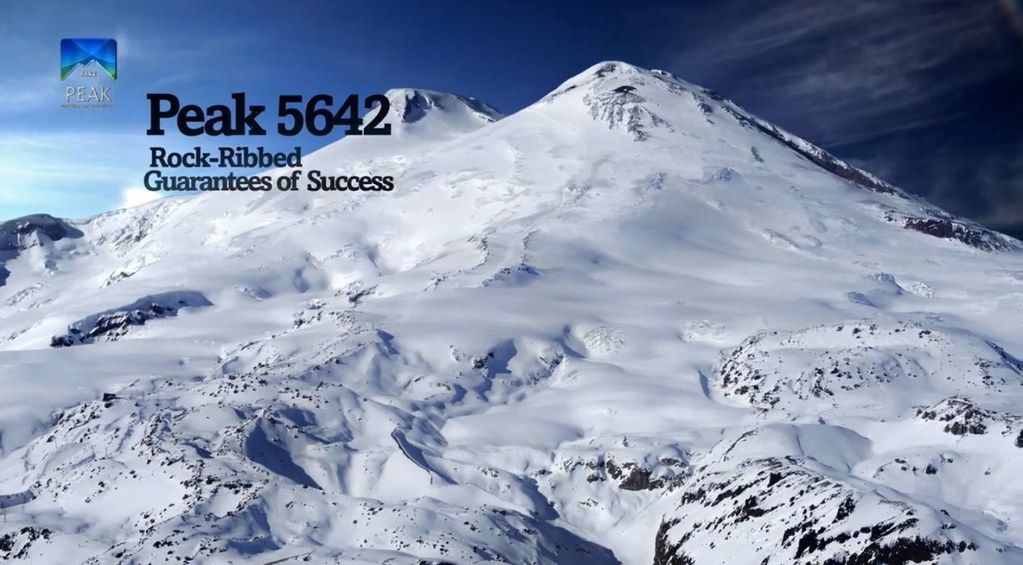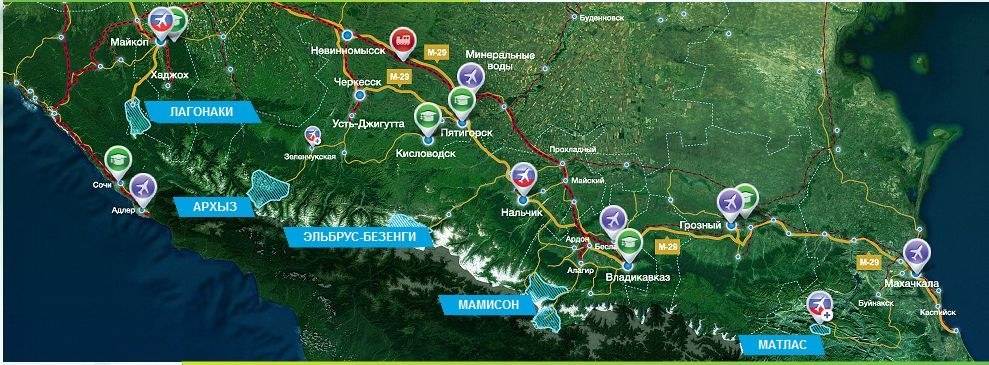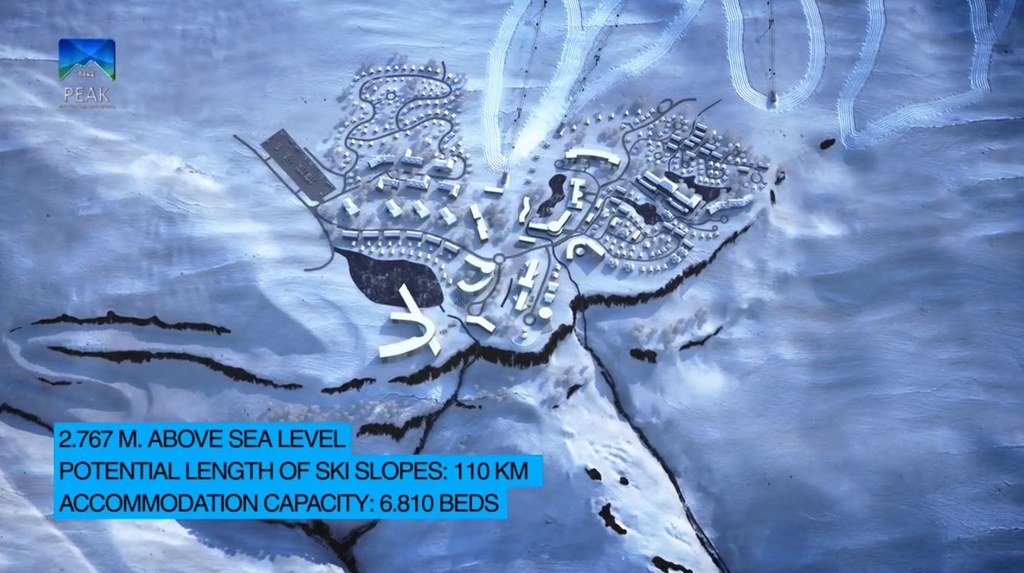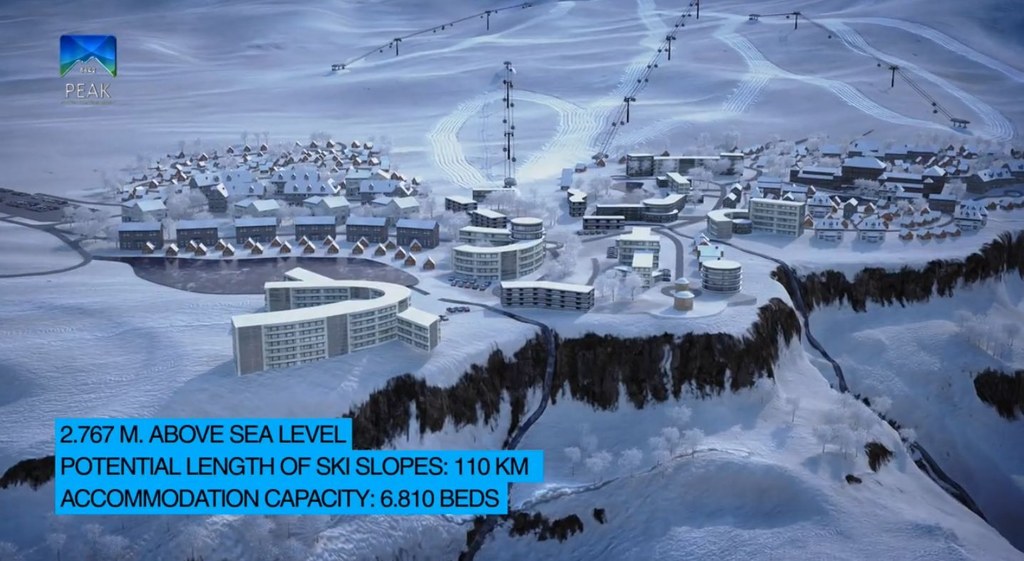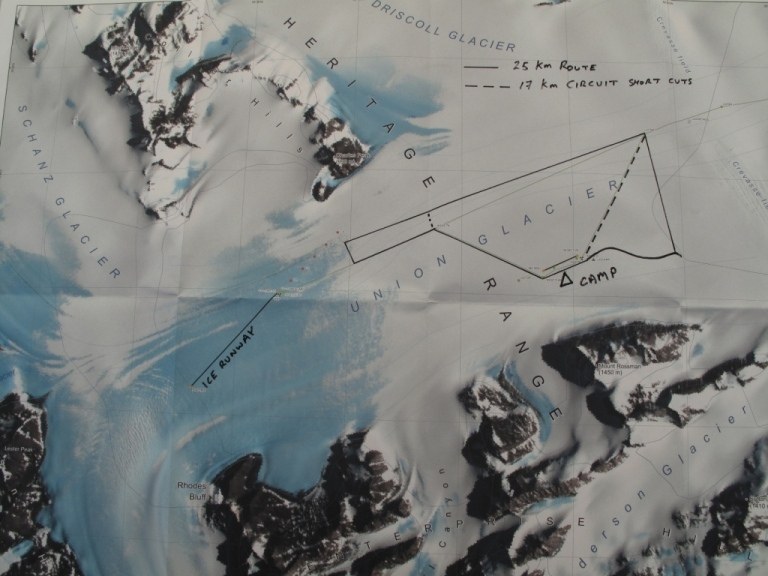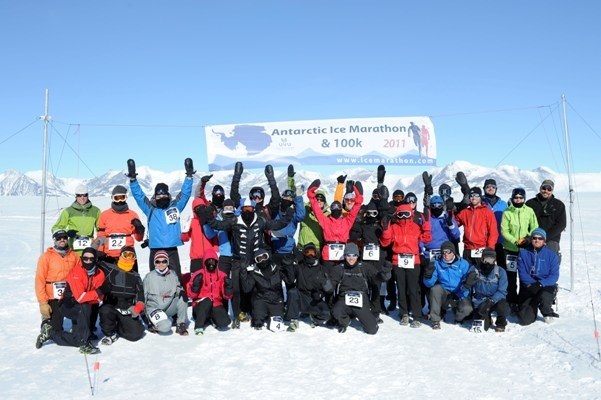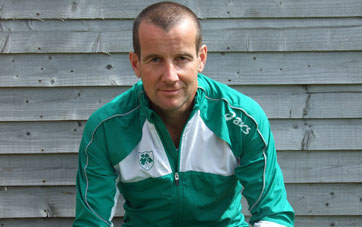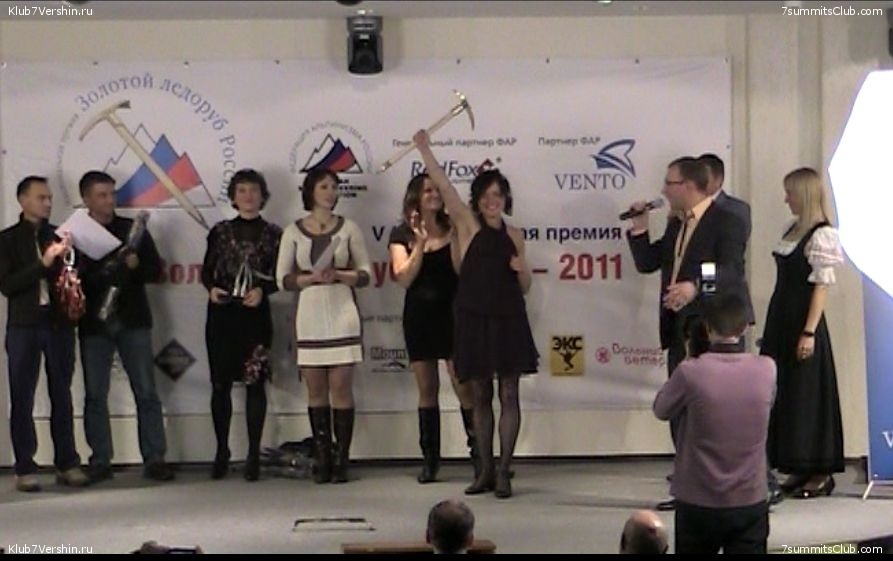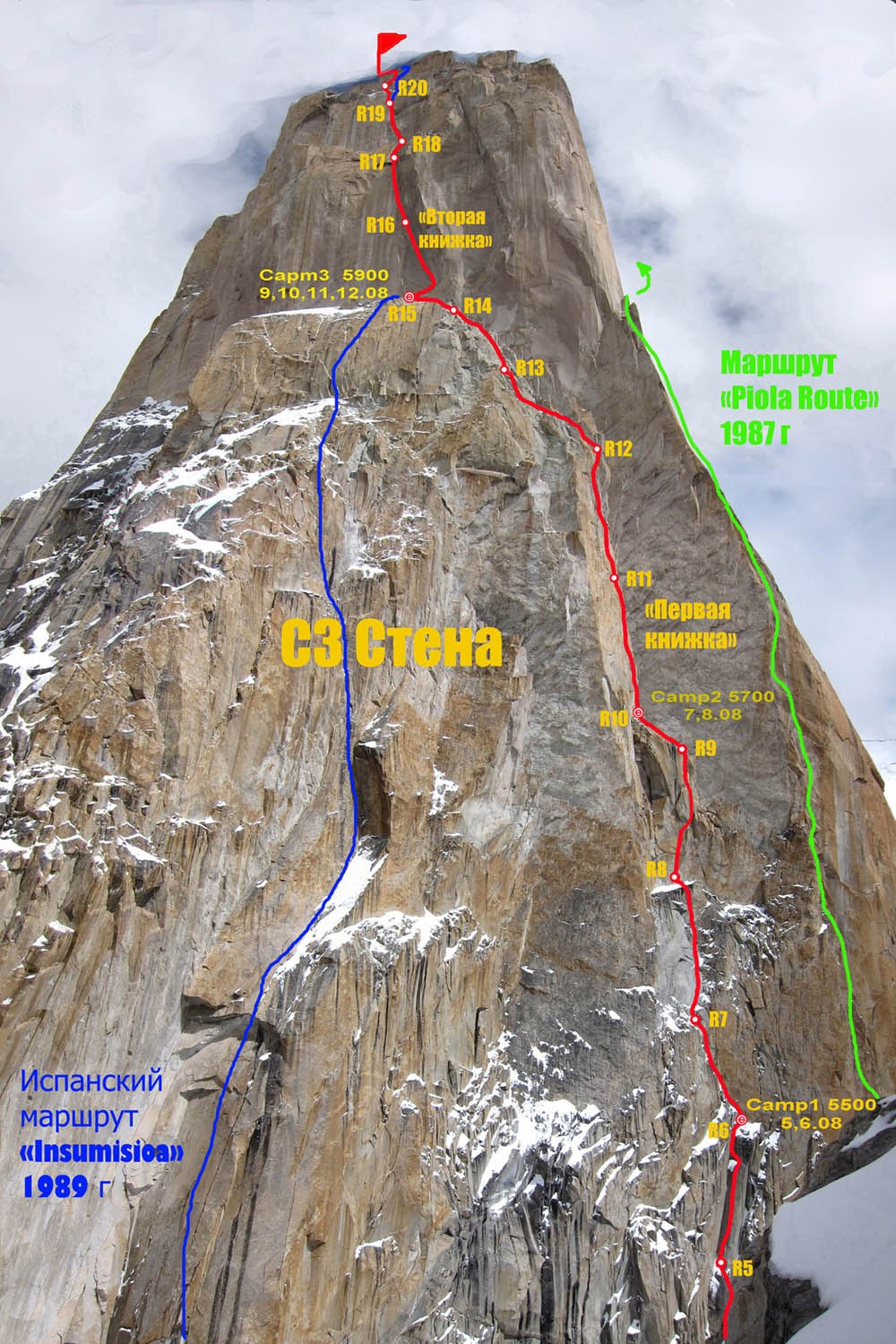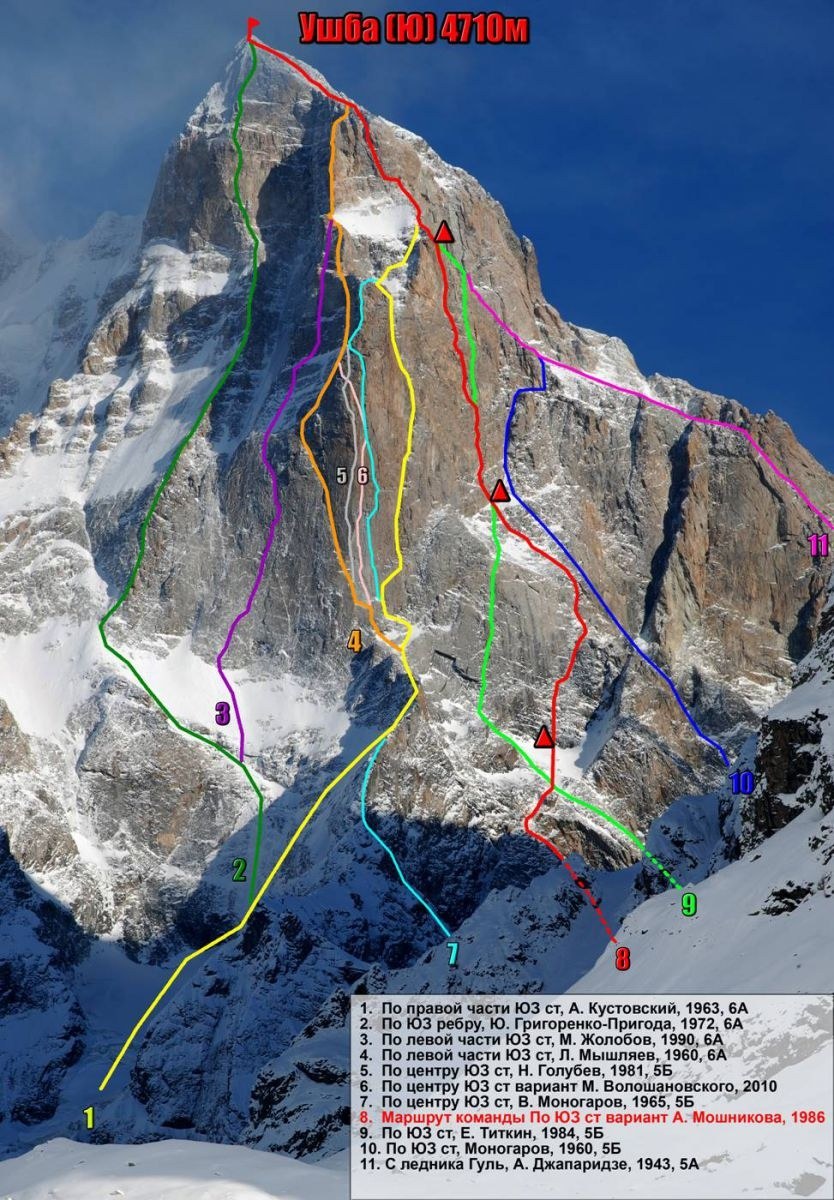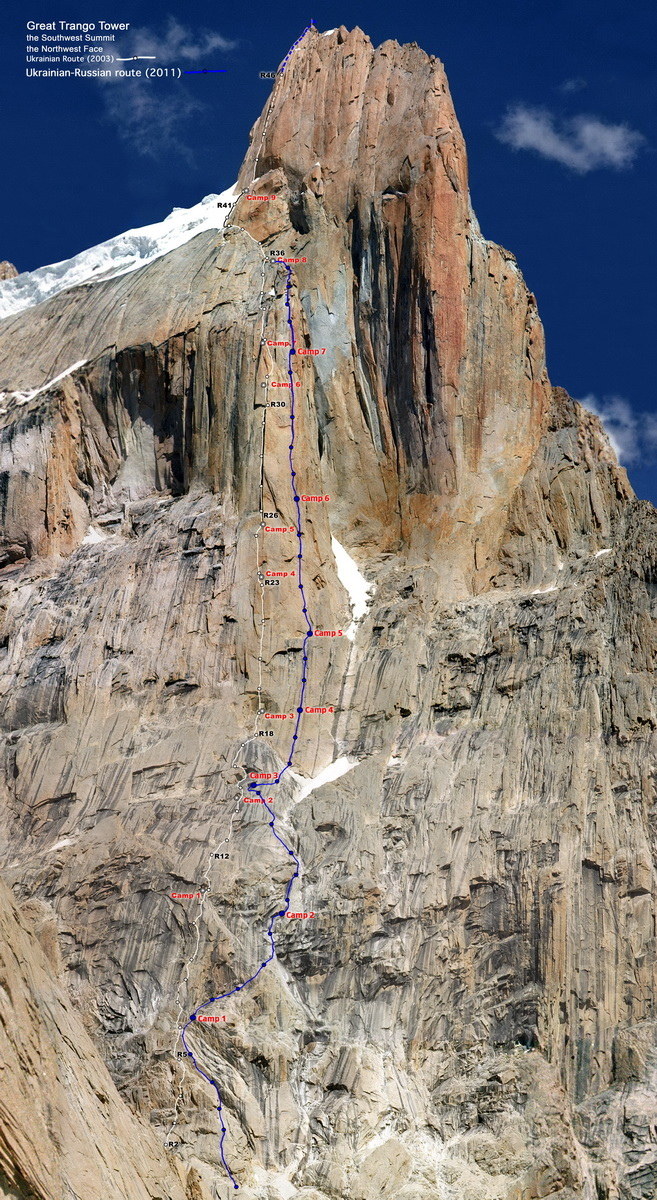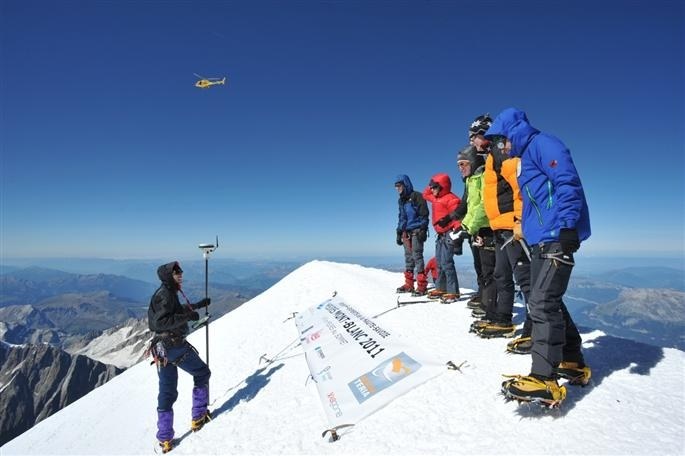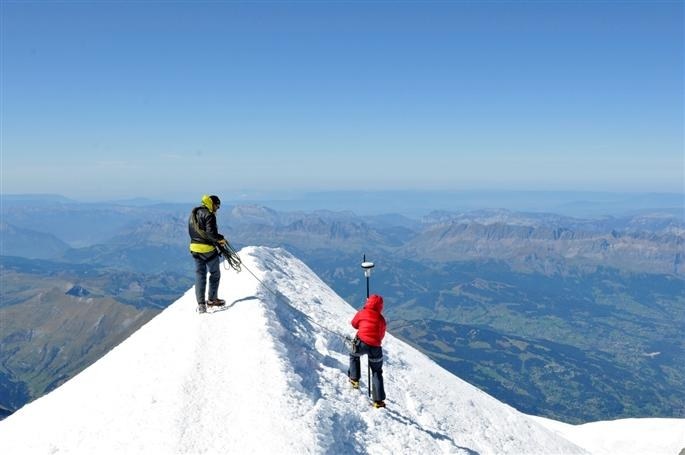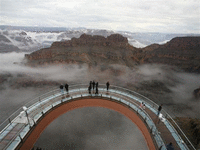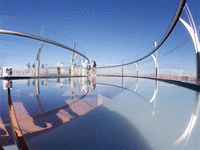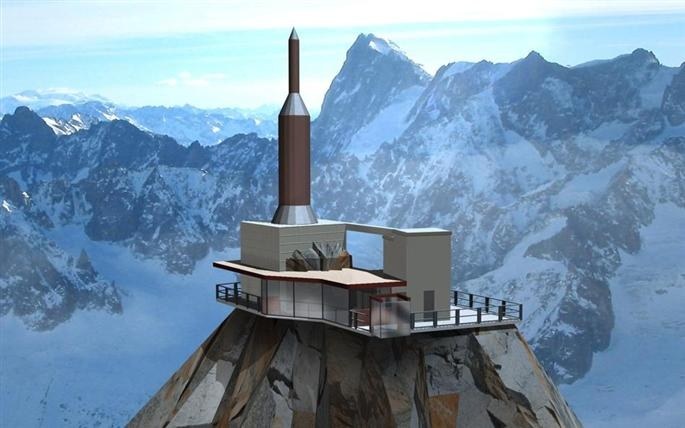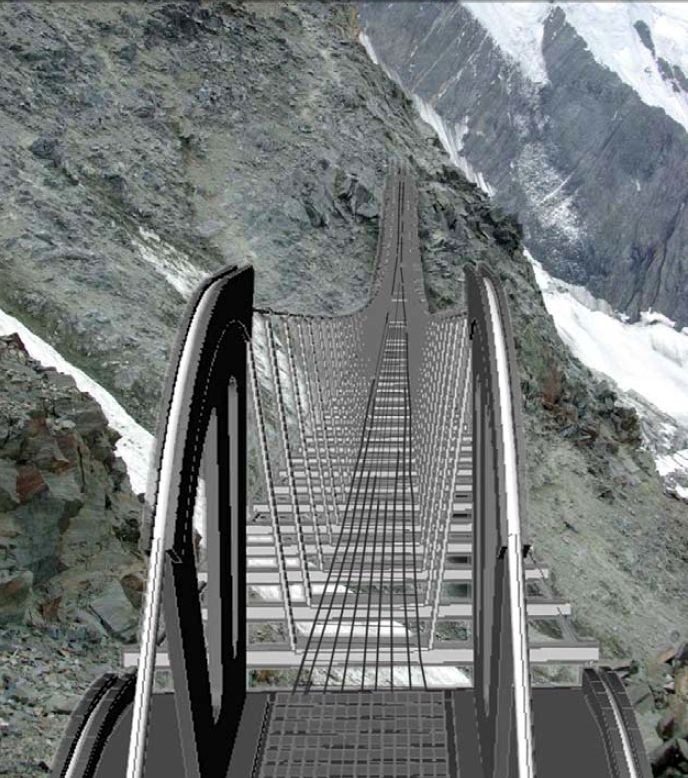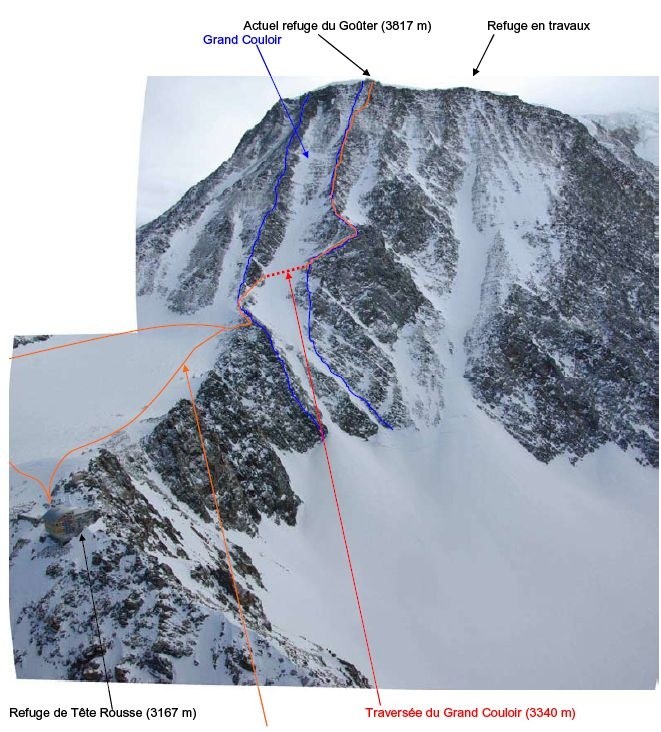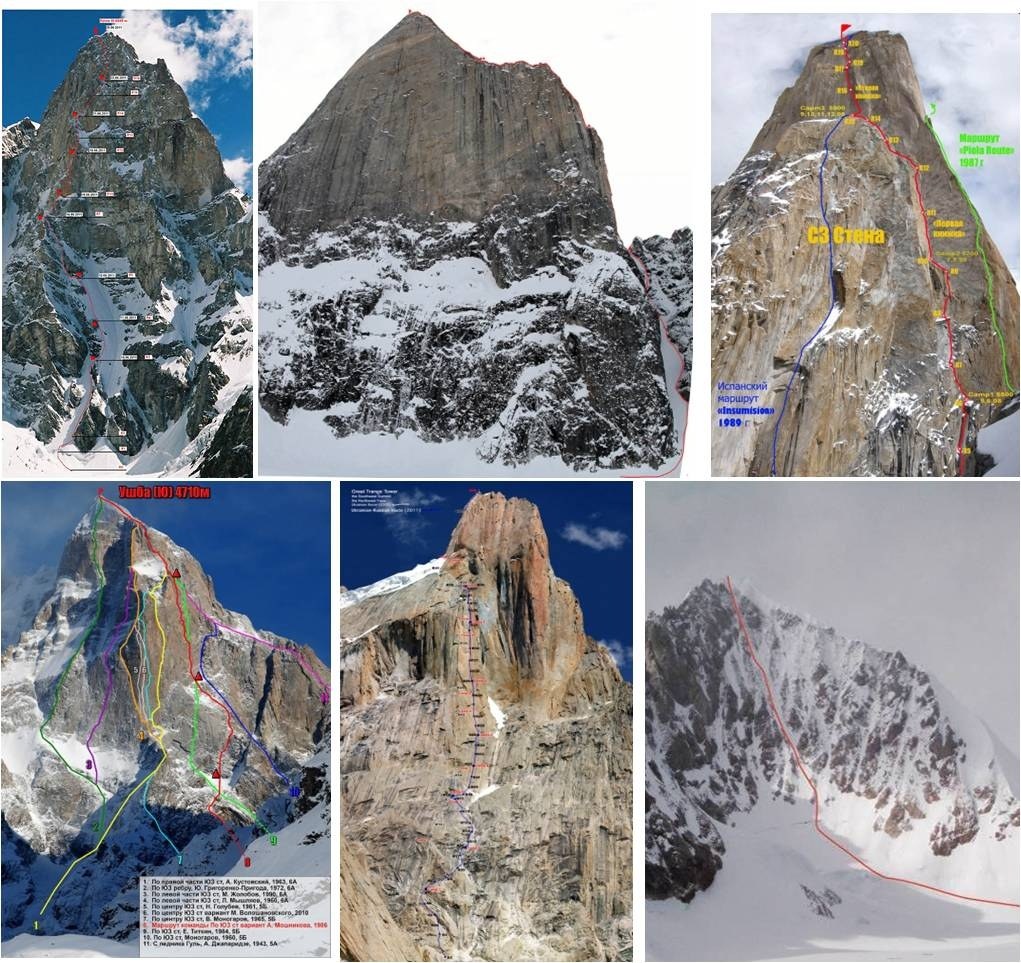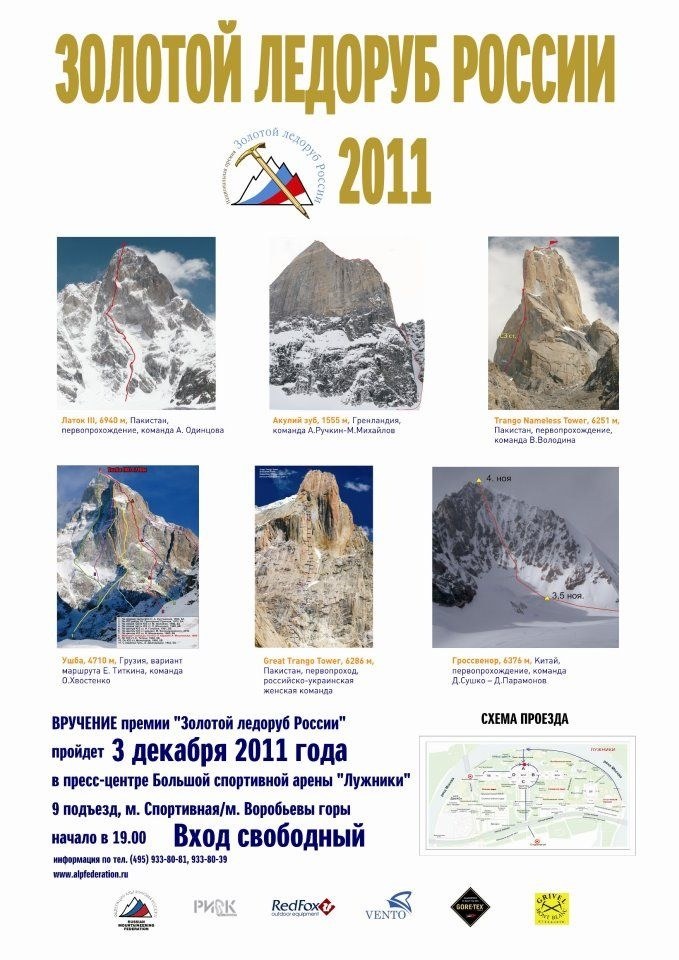World mountain's news - Page 5
President Dmitry Medvedev led a meeting dedicated of tourism in the Northern Caucasus
Elbrus.
Today (11.03. 2012) Krasnodar hosted a meeting chaired by Russian President Dmitry Medvedev dedicated to the development of Russian resorts. The meeting was also attended by Deputy Prime Minister of Russia Alexander Khloponin, Economic ...
Today (11.03. 2012) Krasnodar hosted a meeting chaired by Russian President Dmitry Medvedev dedicated to the development of Russian resorts. The meeting was also attended by Deputy Prime Minister of Russia Alexander Khloponin, Economic Development Minister Elvira Nabiullina and Minister of Sport, Tourism and Youth Policy Vitaly Mutko, as well as heads of the regions of South and North Caucasus districts and representatives of foreign companies.
After receiving the data from Vitaly Mutko that only 59 subjects of the Russian Federation have developed a tourism program, Dmitry Medvedev has demanded to develop a realistic program for the development of tourism in every region of the Russian Federation, stressing that "there should be mutual responsibility."
The leaders of Dagestan and Ingushetia asked the president to increase the authorized capital of the "Resorts of the North Caucasus" in connection with the recent inclusion of these two republics in the program, RIA Novosti reports. Medvedev instructed the Minister of Economic Development Elvira Nabiullina to prepare a final report with calculations of how much money will it take to develop resorts in the two republics.
Nabiullina promised to prepare a report, but added that according to the preliminary assessment, "the inclusion of Dagestan in this program will cost about 40 billion rubles from the federal budget alone."
Russian President Dmitry Medvedev supported the presidential envoy to the North Caucasus Federal District Alexander Khloponin on the need to develop the Caspian coastal area with beach resorts.
The participants of the meeting discussed a wide variety of issues related to the development of tourism in Russia.
France ready to invest in N Caucasus
French companies are prepared to massively invest in helicopter building and also in the hospitality and holiday industries on Russian territory.
French presidential envoy for Russia ties Jean-Pierre Thomas spoke about this at a meeting with President Dmitry Medvedev in Krasnodar in southern Russia on Sunday.
He sits on the board of a joint company which is hoping to attract at least $10bn worth of investment in the holiday industry in the Russian Caucasus.
(TASS)
Russia developing resorts in the North Caucasus
Foreign companies have invested over 3 billion U.S. dollars to develop resorts in the North Caucasus. Russian investors have contributed almost a similar amount. Russian President Dmitry Medvedev revealed these figures addressing a conference in the southern Russian city of Krasnodar dedicated to promoting tourism in the North Caucasus.
Several resort zones in Southern Russia united under the “Resorts of the North Caucasus” will be turned into winter sports and year-round resorts. These zones are Lagonaki, a beautiful plateau located in Krasnodar region and Adygee, Arkhyz in Karachaevo-Cherkesia, Elbrus-Bezengi in Kabardino-Balkaria, Mamison in Northern Ossetia-Alania, Matlas in Dagestan and Tsori and Armkhi in Ingushetia. A network of resorts will also appear along the Caspian Sea shore in Dagestan.
The “Resorts of the North Caucasus” are a grandiose project in terms of territory and the amount of construction work. The overall length of Alpine ski runs exceeds 1,100 kilometers. Despite difficulties, many investors, especially foreigners, expressed readiness to go into this project. This has become possible owing to the businesslike work of the government which has done a lot to attract investors and partners, says Dmitry Medvedev.
“A government mechanism supporting the project was developed and amendments were made to the federal law on special economic zones in the Russian Federation. This law paves the way for solving the most difficult tasks. There was no such mechanism before. The residents of tourist and recreation type economic zones in the North Caucasus enjoy tax and duty breaks. Concrete results of this activity can be seen even now. The construction of the year-round resort of Arkhyz is in full swing, and it plans to receive tourists in the winter season of 2012. Construction of other resorts is now underway,” says Dmitry Medvedev.
At present, some of the tourist projects in the North Caucasus have already worked out their business plans with leading foreign companies. Among these are the French bank Caisse des Depots et Consignations, South Korea’s state-run energy company Western Power and companies in Singapore. The prestigious MIRIM Asia Awards-2011 International Developers competition assessed the project, describing it as the best project for the future.
Despite the rosy picture there are many problems related to the involvement of investors and the launch of construction, says Dmitry Medvedev.
“Among these problems are providing the resorts with contemporary infrastructures, their transport accessibility, the construction of roads, railways and airports. All this is very important for the attraction of tourists to the North Caucasus and the Caspian Sea. We will have to reconstruct at least 6 existing airports and build four new ones. It’s crucial to increase the passenger flow. At present, the capacity of the airports in North Caucasus is about 20,000 passengers a day. But this figure has to be increased five times to implement the large project, Dmitry Medvedev said.
The “Resorts of North Caucasus” is a very expensive project. It is financed under the principle of government and private partnership. At present, only a part of the necessary amount has been collected. According to experts, investments in the North Caucus tourist project will be paid off in 5-10 years. In short, the profitability of the project is up to 15 percent.
Maria Khitrikova dies on Mount Elbrus
Elbrus.
On 4 March 2012 the body of Ukrainian mountaineer Maria Khitrikova was discovered of Mount Elbrus, Russia. The news of young (a mere 21 years old) Ukrainian alpinist Maria Khitrikova whose body was discovered yesterday on Mount Elbrus, at ...
On 4 March 2012 the body of Ukrainian mountaineer Maria Khitrikova was discovered of Mount Elbrus, Russia.
The news of young (a mere 21 years old) Ukrainian alpinist Maria Khitrikova whose body was discovered yesterday on Mount Elbrus, at 5642m the highest peak in Russia, comes directly from journalist Anna Piunova. Maria was guiding a group of alpinists and had summited Elbrus on 2 March when she waited for two companions who had fallen behind in poor conditions. One of these, Roman Kutsiy, has been rescued and transported to hospital while the search is still underway for Denis Lisov. For Maria though, as Anna Piunova recounts, unfortunately no hope remained.
"Two groups of 11 Ukrainian mountaineers summited Elbrus on March, 2nd. They were caught in poor weather on their way down and two dropped behind. Maria Khitrikova, who was guiding one of the groups, stopped and waited for them while the rest of the party successfully descended. Several hours later Maria was able to telephone the rescue services to say that they had lost their way. Poor weather meant that the helicopter could not be sent, however the rescuers set out in search.
During the next evening the rescue team located Roman Kutsiy (at 4200m?), one of the two guys Maria had waited for. He was evacuated to hospital and was diagnosed angina pectoris after spending a cold night and day lying down on a snow flank and eating snow. Details are currently unclear, but according to Roman they untied after three repeated falls, the terrain was icy and Maria lost one of her crampons. They all were depressed and ready for the worst.
Her father, the famous alpinist Vladimir Khitrikov, arrived late night on March, 3. During the next afternoon Maria's body was found at approximately 4700m to the left of the Pastukhov Cliffs. The rescue of Denis Lisov is under way.
21 year-old Maria Khitrikova was the daughter of the Soviet Union Champion Vladimir Khitrikov. She was the big hope of Ukrainian Mountaineering, one of the country's most talented and promising female climbers. Considered the "Wondergirl of high altitude mountaineering", she summited Elbrus aged 12, her first 7000er aged 16, her first 8000er aged 21. She won the Elbrus Race and climbed Pik Lenin (7134m), Khan Tengri (6995m), Ama Dablam (6812m), Pik Korzhenevskoy (7105), Gasherbrum I (8035m) and Gasherbrum II (8068m)."
Anna Piunova, www.mountain.ru
National Geographic 2012 Winners: Sano Babu Sunuwar and Lakpa Tsheri Sherpa
Everest BC (Nepal).
The votes—nearly 72,000 of them—are in, and we're pleased to announce that Sano Babu Sunuwar and Lakpa Tsheri Sherpa are the 2012 People's Choice Adventurers of the Year. Their Ultimate Descent expedition to climb Everest, ...
The votes—nearly 72,000 of them—are in, and we're pleased to announce that Sano Babu Sunuwar and Lakpa Tsheri Sherpa are the 2012 People's Choice Adventurers of the Year. Their Ultimate Descent expedition to climb Everest, paraglide down, and paddle to the sea truly embodies the spirit of adventure. With borrowed gear and a bare-bones budget, there were no corporate sponsors nor social media campaigns, just the essentials for adventure—vision, creativity, and friendship.
The Ultimate Descent: Lakpa Tsheri Sherpa and Sano Babu Sunuwar
Two Nepalis complete a mission to launch a paraglider from Mount Everest’s summit and kayak the Ganges to the Indian Ocean.
When Lakpa Tsheri Sherpa first saw paragliders arrive in the Himalaya, he dreamed of flying above the massive peaks of his home—the Khumbu region. After his third successful summit guiding trip on Everest, he viewed paragliding as a simpler, faster, and more graceful way of descending through the peak’s perilous slopes.
In October of 2010, Lakpa borrowed a paraglider, got a few pointers, and launched from a hillside above his home. He promptly crashed into a tree. With his paraglider wing badly damaged, Lakpa set out for the town of Pokhara, considered to be the gathering spot for paragliders, to seek repairs and find a mentor. He ran into Sano Babu Sunuwar, whom Lakpa had met years earlier on Island Peak. Babu repaired the glider and the two men hatched the plan for the Ultimate Descent.
They would climb to the world’s highest point, launch a paraglider and fly for as long as possible, bicycle to a point where streams gathered into rivers, kayak across the Nepali border into India, and paddle the Ganges River all the way to the Indian Ocean. It would be an unprecedented first, but it was the overall combination of sports, audacity, and friendship that drew the duo to the idea. Babu, 28, had no climbing experience. Lakpa, 39, had never kayaked and didn’t even know how to swim.
In April of 2011, the duo had borrowed gear, slapped a basic plan together, and began their ascent of Everest. On May 21, they became the third party to launch a paraglider from the summit and set a new world record of 8,865 meters for free flight in the process. On the Kosi River’s Class V rapids, Babu got caught recirculating in a massive whirlpool in their two-man kayak, while Lakpa floated down river. Once they reached the Ganges, they paddled flatwater through unfamiliar country. They were robbed at knifepoint and had to live off fruit trees. After 850 kilometers, Lakpa and Babu reached the Bay of Bengal. On June 27, they became the first people to complete the descent from Everest’s summit to the Indian Ocean.
“When we arrived on the beach, we were frightened. We were surrounded by giant red scorpions,” says Babu. Later after showing pictures to friends, he would learn that these “scorpions” were in fact harmless crabs.
The Ultimate Descent team earned recognition from the international paragliding community, and the Nepali press hailed them as national heroes. Western adventurers admired their spunk, simplicity, and bare-bones budget. There were no social media campaigns, corporate sponsors, or expedition websites, just the essential ingredients for adventure—vision, creativity, and friendship.
—Fitz Cahall
THE INTERVIEW
Adventure: Babu, as a kayaker and paraglider, what was the most difficult part of the journey?
Sano Babu Sunuwar: On Everest I felt a great deal of discomfort. It was hard to breathe. Lakpa told me, “You are Sherpa. Be strong.” I am not a climber, but this was a great dream of mine to climb Mount Everest. Lakpa had done this many times. He helped me a great deal.
A: What was the most intimidating part of the journey?
Lakpa Tsheri Sherpa: The bugs. The ants. All animals—so active. Insects—so active. They are also busy. People so active. In the mountains, all creatures move slowly. In India, all the animals and the people move so fast. They are not still. I did not like the bugs. When we reached the ocean and took the kayaks to shore, the beach was covered in giant red scorpions. I was scared then, but we learned later that they were crabs and harmless. I also had a hard time breathing in the low elevation.
A: While the flight from Mount Everest might be the most eye-popping part of your adventure, it sounds like the Ganges and India were also difficult?
SBS: Sometimes whole villages would come down. We were robbed. They came with knives. We protected the camera, but gave them money. They left, but we paddled very fast. We could hear them coming with a motorboat. We found an island with tall grasses and hid. We slept in the kayaks the whole night.
LTS: We ate fruit from the trees, but the water was bad. We were not used to seeing dead bodies. In Nepal, we burn our dead. In India, they are put in the river. We would see two or three bodies a day.
A: For each of you, was there a favorite part of the journey?
SBS: Taking off from the highest point in the world. At first it was really windy, but the wind calmed. When we lifted off we were carried immediately upward.
LTS: The flight. I like to sing while I fly. We were very happy. We were both singing. This was a dream for both of us.
A: The "ultimate descent" earned you some attention both in Nepal and abroad. There was a short film made about your flight. What has it been like to be recognized for your achievement?
SBS: We love getting to share our dream. We came to Europe to show the film at a film festival. We feel a little like movie stars. People wanted to shake our hands. We were very happy to share our story.
LTS: When we got home, we were very excited to share our story not just with Nepal, but all over the world. It felt like a million people. There were a lot of foreigners who came to set records. We weren’t after a record, we just wanted to do all these things, climbing, paragliding, kayaking in one continuous trip
Apa Sherpa felicitated with the Guinness World Record
Everest BC (Nepal).
Apa Sherpa, the Nepali climber who has conquered Mount Everest a record 21 times was felicitated with the Guinness World Record. On the 44th day of the Great Himalayan Trail-Climate Smart Celebrity Trek lead by Apa, Guinness World Record ...
Apa Sherpa, the Nepali climber who has conquered Mount Everest a record 21 times was felicitated with the Guinness World Record. On the 44th day of the Great Himalayan Trail-Climate Smart Celebrity Trek lead by Apa, Guinness World Record Editor-in-chief Mr. Craig Glenday and his team met him and handed over a certificate at a function at Shree Saraswati Higher Secondary School in Gyalthum, Sindhupalchowk. Apa is accompanied by Dawa Stephen Sherpa (two time Mt.Everest Summiteer), Saurabh Dhakal and Sameer Jung Thapa, as part of a campaign to promote tourism and highlight the impact of climate change. The team that plans to walk 1,700 km has covered seven districts and a distance of 590 km so far.
“It feels great to receive this honour as Mr.Glenday himself has traveled this far to hand over the certificate. I feel proud to be identified all over the world,” Sherpa beamed. He further said, interacting with people is altogether a new experience to him and added, "Now onwards I will not climb up to the top of the world but I have been witnessing the hills and people for the last one and half months which has given me ample of opportunities to learn about the communities living in the vicinity of mountains". Hundreds of people attending functions expressed their happiness with the honour bestowed on Sherpa.
On the other hand Mr. Glenday expressed his feeling as “What Sherpa has achieved is unbelievable. He is not just a local hero but hero of the world. He is an inspiration to millions of people. It is a great privilege to hand him the official certificate. “The trip to Nepal has been amazing so far. It feels like I've been here for ever,” he added.
The sherpa from Thame, Solukhumbu; home town of Everest Legend Tenzing Norgay first summited Everest on 1990. Last year on May he conquered Everest for the 21sttime as the climbing leader of Eco Everest Expedition and became eligible for this award. He has shown his effort towards Everest clean up by engaging in Eco Everest Expedition since 2008 and continuing it for four consecutive years. He made his 18th summit in 2008, 19th in 2009 and 20thin 2010 and with Eco Everest Expedition organized by Asian Trekking to raise awareness about the impact of climate change.
CHRISTIAN STANGL: 21 WORLD SUMMITS
To climb all 21 peaks is my new goal. The “seven summits” I completed 2007. After climbing some of the “second seven summits” and some of the “third seven summits” I noticed that there is simply no ...
To climb all 21 peaks is my new goal. The “seven summits” I completed 2007. After climbing some of the “second seven summits” and some of the “third seven summits” I noticed that there is simply no uniform list regarding the ranking of the peaks. Therefore, parallel to the climbing, I started a DGPS Surveying project of all controversial discussed peaks. Following table should be considered as PRELIMINARY.
Real extreme on Kilimanjaro
Kilimanjaro.
Barefoot Kilimanjaro Trekkers Reach Summit to Promote Charity The barefoot trekkers braved cold temperatures, plenty of snow, and lots of sharp, loose rocks without protection, but after a five day climb up the 5695 meters dormant volcano, ...
Barefoot Kilimanjaro Trekkers Reach Summit to Promote Charity
The barefoot trekkers braved cold temperatures, plenty of snow, and lots of sharp, loose rocks without protection, but after a five day climb up the 5695 meters dormant volcano, they reached the top.
Strict rules allowed for footwear only while in camp between established climbing times and preparation included months of barefoot hiking, running, and "virtually living without shoes in order to give the climber's feet the best possible chance against the elements on the mountain."
The team reached the peak of Kilimanjaro on Saturday after setting out from the Kibo Huts four hours earlier in sub-zero temperatures. It had snowed over two feet earlier in the week, yet the crew trudged barefoot through thick snow and loose volcanic scree all the way to the top.
"We reached the peak as one very emotional tribe knowing we had achieved what we set out to do, Andrew King of the team posted on Barefoot IMPI's blog. "The entire barefoot team has summited - sore - but with no serious injury."
Besides King, the team included Hedley Young, Camilla Howard, Clyde Barendse, Rich Hamman, Sean Disney, Dr. Ross Tucker, Paul Jason and David Russell-Rockcliff.
King noted that on the way up they had "disheartening encounters" with climbers that had failed to summit and were visibly delirious and vomiting. They became worried that the same fate may befall them.
When Sean Disney -- who has successfully summited all the top seven peaks -- was approached to lead the Kilimanjaro team and asked to comment on his feelings he reportedly said at the time: "If you get lucky and the weather gods smile on you then... it's possibly not impossible."
Yet all trekkers made it to the top in relatively good condition. "We climbed Kilimanjaro, the tallest free standing mountain in the world, from gate to summit," King said. "Barefoot!"
The laborious feat was not without a cause. The team took on Kilimanjaro for the benefit of the Red Cross Children's Hospital, which has provided financial shelter and nourishment to people and businesses in South Africa for over 165 years.
"We live in a fortunate age where, for the most part, individual expression is accepted and celebrated" Barefoot IMPI stated on its Web site. "Outlandish fashion, tattoos, and vibrant hair color attract little attention or comment. But appearing barefoot in public, or running or climbing a mountain without shoes, draws immediate attention. Being barefoot is not regarded as an act, but as a statement."
Making that statement was no simple task.
Promo
"One of the now infamous quips within the team was 'No-one said it would be easy,'" Barefoot IMPI's Dave Russell noted on the blog. "And that's exactly the point. How are you going to raise genuine interest in the expedition and thereby awareness for our beneficiary if the challenge did not capture people's imagination and spark heated debates?"
"There seem to be parallels between our daily struggles on the mountain and the mountain of struggles that the awesome kids at the hospital face," Russell added.
You can read more about their experience by visiting barefootimpi.org or watch the video below.
Source: http://www.ibtimes.com/articles/291334/20120201/barefoot-kilimanjaro-trekkers-summit-charity.htm
Kyle Maynard did it, and did it the hard way
After 10 grueling days on Africa's tallest mountain, Maynard -- a congenital quadruple amputee and Collins Hill High School grad -- and his team reached the summit of Mount Kilimanjaro two Sundays ago. As if 19,340 feet of elevation wasn't challenge enough, they decided mid-journey to take the Western Breach.
A steep ascent fraught with the threat of rock slides, the Western Breach claimed the lives of three American climbers in 2006. It was shut down by the Tanzanian government for about a year afterward.
"It's almost 3,000 vertical feet," Maynard said Friday, having been back in the States for less than 24 hours. "Its massive boulders that are just held together by ice. And snowfields. There was no comparison (with the rest of the climb)."
Added Dan Adams, Mission Kilimanjaro's co-leader: "It's like something out of 'Lord of the Rings.'"
Maynard -- definitely the first quadruple amputee to summit Kilimanjaro without prothestics, and, by his own joking account, probably the first man period that's been "dumb enough" to crawl to the peak -- and crew reached the top at 7:15 a.m. on Jan. 15.
Nearing the peak, the group of friends, climbing pros and military veterans decided to take the Western Breach in order to save three or four days of hiking and about 15 more miles of wear and tear. The decision led to an exhausting 12-hour day.
"It was probably the toughest day that I've ever experienced in my life," Adams said. "And that comes from a fully able-bodied person."
Filmmaker Takashi Doscher, also a Collins Hill grad, made the trek with camera in tow.
"Whenever I'd get too nervous about it," he said, "I'd just tell myself, 'This is good for the movie.'"
Donning carbon fiber "sockets" around his limbs, Maynard said the overall climb was more like the other climbers' than expected. Previous concerns about blistering and skin integrity on his "nubs" were for naught, even during a torrential downpour in the Kilimanjaro rainforests during the first day of ascent.
Like he expected, his shorter limbs actually helped him acclimate to the elevation.
"This was something where I would look up the mountain, I'd look up at the summit and it didn't seem like it was getting any closer," Maynard said. "That was really just a huge mental challenge. I had to kind of remind myself that it was literally going to happen one step at a time."
That, he said, was part of the bigger mission of the journey.
"Don't be so caught up on that horizon," he said. "Just keep moving."
Source:
http://www.gwinnettdailypost.com/news/2012/jan/28/maynard-team-conquer-africas-kilimanjaro/
Zermatt Civic Community want to buy Hornli Hut
Zermatt.ch. The Zermatt Civic Community is planning to invest several million francs in the renovation and extension of the existing mountain huts on the Matterhorn. The modernized accommodation is to be opened in 2015 to coincide with the ...
Zermatt.ch. The Zermatt Civic Community is planning to invest several million francs in the renovation and extension of the existing mountain huts on the Matterhorn. The modernized accommodation is to be opened in 2015 to coincide with the 150th anniversary of the first ascent of the Matterhorn. It is intended to upgrade the Hornli Hut with space to sleep 120 and a daytime restaurant to meet increased guest requirements and the latest standards of technology.
The current accommodation options on the Matterhorn at 3260 m.a.s.l. consist of two buildings: the Berghaus Matterhorn (Belvedere), from the turn of the 19th century, which is owned by the Zermatt Civic Community, and the Hornli Hut, which was built in 1965 by the Monte Rosa section of the SAC on a leasehold plot belonging to the people of Zermatt. The two buildings are not linked and both are in urgent need of renovation. By 2015, the two buildings are to become one unit that will meet today’s requirements in terms of gastronomy, functionality, energy, sanitary facilities, water supply and wastewater disposal, whereby the water shortage at the foot of the Hornligrat presents a particular challenge. Plans envisage solving this problem in a similar way to the new Monte Rosa Hut; snow would be melted in winter and stored in a tank under today’s SAC hut.
Every year, an average of up to 3500 guests stay overnight on the Matterhorn. Of these, some 400 stay in the Hornli Hut and 3100 in the Berghaus Matterhorn. The narrow dormitories for up to 25 persons and simple sanitary facilities no longer meet today’s requirements. On summer days, up to 140 mountaineers set out on the ascent of the Matterhorn. The Berghaus Matterhorn is also extremely popular with day guests, who have played a large part in the success of the lodge. This results in the modest infrastructure and hut team around host, Kurt Lauber, regularly reaching the limit of what is within the realms of possibility. Fernando Clemenz, Director of Mountain Operations at the Matterhorn Group sums it up: “It is of prime importance to the responsible persons in the civic community and the Matterhorn Group to offer guests suitable facilities and services at this special location, even if the focus is not on a profitable operation because of the short opening period.”
New construction or renovation: different versions under examination
The initial position is not exactly straightforward and also somewhat out of the ordinary, even for the Matterhorn Group: the modernization of a major building complex in the high mountains requires time. Thus planning at the Matterhorn Group has been pressed ahead with for months, even while decision making is still in progress. The civic community has commissioned Zermatt architect Hans Zurniwen to draw up a pre-project for the renovation and extension of both huts on the Matterhorn. The pre-project will present and examine different versions. The preferred version is to renovate the Berghaus Matterhorn and build a modern extension to replace the Hornli Hut. Another option being considered is to replace the Bergaus Matterhorn with a completely new building or an extension to the western section of the building. Particular attention will be paid to the building services and supply concept during modernisation. Solar panels will be installed for the supply of hot water. There are no plans for an actual heating system; the major part of heating needs will be covered using passive solar radiation. The water supply will be provided via a water reservoir for meltwater, which must have a volume adequate to ensure the supply until September. Wastewater disposal will take place using the proven method of a separate sewer system (solid/liquid) with sewerage system and sewage plant disposal, whereby a small hydropower station will be operated using treated grey water. In addition, a ventilation system is planned for the kitchen and communal room and the installation of a photovoltaic system envisaged on the south facade for the supply of electricity. Initial cost estimates anticipate an investment of approximately 7 million francs for the renovation and extension of both huts.---
Zermatt Civic Community want to buy Hornli Hut
The responsible bodies of the Zermatt Civic Community and the Monte Rosa section of the SAC agree that for operational and economic reasons, it would make sense for the future responsibility for catering operations at the start of the Matterhorn climb to be in one pair of hands. The Zermatt Civic Community now wants to take over the entire building project and buy the Hornli Hut from the Swiss Alpine Club. Preparatory building work can commence in 2012, as soon as the decision is made on the version chosen for the extension and renovation. A possible new-build section would be realized in 2013 and 2014 and completion work carried out in 2015. The smooth running of normal hut operations must be ensured during the building phase, because closing the Hornli Hut would be equivalent to closing the Matterhorn. Environmental associations are included in the key planning phase as well as the SAC and regular discussions are held. All agree that a modern operation will welcome guests in 2015, at the 150th anniversary of the first ascent of the Matterhorn.Thrills at Switzerland’s most famous SAC hut
Thrills at Switzerland’s most famous SAC hut
“You never walk alone” – appropriate words published on the Internet by a hiking blogger from England. Anyone hiking from the Schwarzsee lake towards the Hornli Hut is truly never alone, because an increasing number of mountain hikers are now making the ascent as well as climbers. Some people sit equipped with binoculars on the terrace of the Hornli Hut like avid fans. From their ringside seat they watch every step - or false step - of the Matterhorn gladiators and comment on the events.
Hornli Hut guests, day visitors, know that a stay on the terrace is a “live” thriller, mountain panorama and perhaps documentary of a dramatic rescue rolled into one. If poorly prepared climbers are en route, watchers can be witness to a game of Alpine Russian roulette played by the summit hopefuls. Of climbers who enter the wall with poor equipment and scant preparation and then tumble down like rag dolls from the east flank. At worst, the unfortunate climbers belong to the ten per cent of victims who disappear for ever into the glacier.
But up there are also many serious mountaineers, the summit scalers, whose presence has made the Matterhorn world famous since 1865 and continues to do so today. And then there are the charismatic mountain guides, who lead their guests safely up and down the magical “Hore”, the local name for the mountain. Every summer they make their pilgrimage to the Hornli Hut and accept the stresses and strains of a restless, if not sleepless, night in a dormitory with up to 25 people. And if water is in short supply, they’ll also go without brushing their teeth. On sunny, summer days there are so many climbers on the Matterhorn that lack of space on the roped routes results in exchanges of strong language, holdups and accidental rock falls.
In its almost 150 years of mountaineering history, the Matterhorn has claimed well over 500 lives. Four deaths occurred at the start in 1865. After Englishman Edward Whimper’s seven-strong team stood in triumph on the summit, he was acclaimed the victor. However, four people fell to their deaths on the descent and Whimper faced court proceedings. Nevertheless, the Matterhorn has a magical attraction. It is the most photographed mountain in the world. It holds many mountaineers in its grip and won’t let go until they too have stood on the summit.
Information on the first ascent and the torn rope of Whimper’s team: on view in the Matterhorn Museum
--
http://www.alps360.ch/vr/matterhorn-swiss-summit-sunrise
Zermatt Museum: The past as an experience
The Zermatt Zermatlantis Museum will be celebrating its fifth anniversary on the 18th December 2011. Over this time, it has become an important pillar of Zermatt’s alpine history and culture, with as many as 1,000 visitors flocking to the underground world of the museum on some days.
The concept of setting up a village with original, old buildings from Zermatt as a showplace for the historical subjects has been extremely successful. For its guests, the museum has developed into an integral feature of the overall experience of Zermatt. Even the locals often come and look around.
Crowds of people
On average, around 40,000 persons visit the museum each year. It can happen that up to 1,000 persons descend the stairs into the underground past of Zermatt on a single day. The successful concept originated from the Steiner museum concept company in Sarnen, who count the Glasi Hergiswil (glass works museum), the Harbour Museum in Hamburg and the Swiss National Museum (Landesmuseum) among their clients.
Zermatlantis is the fusion of the words Zermatt and Atlantis, and is a metaphor for the historically designed museum archipelago. Stories are told of the Horu, and of the little village with its inhabitants, who have now become globally respected tourism protagonists as a result of “first-ascent alpinism”.
“Village square” as the centre
“Now and again, we have noticed that our visitors on the Museum’s village square behave as they would have behaved on a real village square. They talk to each other, sit on the benches near the tree or even take a nap”, says Edy Schmid, the president of the Alpine Museum Zermatt Association. You reach the walk-in buildings from the cobbled village square: the mountain guide’s house, the local pastor’s home, the tiny tea house and the stables with farm animals, including mules, black-necked goats and black-nose sheep. There are also wild animals, however: marmot, chamois and an ibex that is still smelly today.
The drama of the first ascent
The visitors are mostly drawn to mountain guide’s house and to the house in which the first ascent of the Matterhorn by Edward Whymper in the year 1865 is shown. The drama of the three survivors (Whymper and father and son Taugwalder, the mountain guides) and the four men who fell (Michel Croz, a mountain guide from Chamonix, and the guests Francis Douglas, Robert Hadow and Charles Hudson) really gets under your skin. In addition to the broken rope, which is draped over a red velvet cushion, you can also see equipment and clothing remnants from the victims, as well as the portraits of the stern-looking participants. In 2007, using a replica of the original rope, it was found that, contrary to the rumours, the rope was not cut for self-survival. The investigation commissioned by the museum proved that the rope could only hold 300 kilograms, and was therefore too thin to save the lives of the four men that fell.
--
Elbrus invites athletes and all mountain amateurs
Elbrus.
Welcome to Elbrus! Now Prielbrusie region, ie, the southern slopes of Mount Elbrus, is completely open to the public. In early May, the company Red Fox plans to hold a massive competition. Hundreds of athletes, mountain fans will come to ...
Welcome to Elbrus! Now Prielbrusie region, ie, the southern slopes of Mount Elbrus, is completely open to the public. In early May, the company Red Fox plans to hold a massive competition. Hundreds of athletes, mountain fans will come to the mountain slopes of Mount Elbrus, to compete in several types of competitions. Race is included in the international calendar of the International Federation of mountain races (ISF). This is the first start of the World Series. We are waiting for the world leaders.
Elbrus - the highest mountain in Europe, is waiting for you ! Climbing is a unique, with beautiful scenery, and you will remember for a lifetime.
For the first time professionals and amateurs will start separately. Amateurs will start up to the summit, like all previous years, from the shelter of "Barrels" (3800 meters), and professionals - from the Clearing Azau (2350 meters).
Vertical kilometer same as before, will be from the Clearing Azau to shelter "Mir"
We wait your application on the IV International Festival of extreme sports Red Fox Elbrus Race 2012!
http://www.elbrus.redfox.ru/english/
Red Fox company together with Russian Mountaineering Federation conduct IV International festival Red Fox Elbrus Race on May 6-11, 2012.
The competition will take place on the Elbrus peak, the highest top of the Europe and the most popular Russian mountain region.
You can fill the Application here
http://www.elbrus.redfox.ru/english/zayavka/
The preliminary applications can be sent by e-mail in the attached excel file. E-mail: elbrus@redfox.ru. It’s obligatory to indicate last name, age and discipline of the competitions and qualification.
The preliminary applications are accepted until 20 April 2012 with obligatory confirmation.
Program:
6th May
11-00-19-00 Registration. Glade Azau.
19-00 Briefing of the Elbrus Vertical Kilometer® (2012 Vertical Kilometer® Series).
7th May
9-00 Elbrus Vertical Kilometer® (2012 Vertical Kilometer® Series).
14-00 Inauguration of the Festival.
Awarding ceremony of the winners of the Elbrus Vertical Kilometer®.
19-00 Briefing of the ski-mountaineering personal race.
8th May
9-00 Ski-mountaineering personal race.
14-00 Awarding ceremony of the winners of the ski-mountaineering personal race.
19-00 Briefing of the Elbrus Vertical SkyRace® (2012 SkyRace® Series).
9th May
7-00 Elbrus Vertical SkyRace® (2012 SkyRace® Series).
19-00 Briefing of the snow-shoes race.
10th May
10-30 Snow-shoes race.
15-00 Awarding ceremony of the winners of the Elbrus Vertical SkyRace® and of the snow-shoes race. Closing ceremony of the Festival.
11th May
Reserve day.
You are welcome!
Summits Expedition: RI mountaineers eye Mount Everest
Vinson.
Niken Prathivi, The Jakarta Post, Jakarta. Indonesian mountaineering group the Nature Lovers Society (Wanadri) is on its way to conquer Mount Everest after successfully reaching Vinson Massif’s peak, 4,897 meters above sea ...
Niken Prathivi, The Jakarta Post, Jakarta. Indonesian mountaineering group the Nature Lovers Society (Wanadri) is on its way to conquer Mount Everest after successfully reaching Vinson Massif’s peak, 4,897 meters above sea level, in Antarctica on Jan. 7.
It was the fifth summit conquered by the team of six, who aim to reach Mount Everest’s peak, 8,850 meters above sea level, in May in order to complete a two-year Seven Summits expedition.
If they scale Mount Everest, they will be the second Indonesian team to reach all seven summits. The Mahitala team, from the Parahyangan Catholic University (Unpar) in Bandung, West Java, was the first to complete the mission.
The expedition is aimed at promoting nature conservation, with the group’s experiences and the lessons learnt during the expedition to be included in a manual for climbers, particularly those from tropical countries like Indonesia, explaining how to scale mountains outside of sub-tropical regions.
“We are now preparing our six mountaineers so they’ll be ready for the final climb in May and April. So far, they’re 75 percent ready in terms of physical condition, but in sponsorship, we’re still only 20 percent ready,” Seven Summits Indonesia director Yoppie Rikson Saragih told The Jakarta Post on Thursday.
The Wanadri team is made up of team head Ardeshir Yaftebbi (28), Nurhuda (22), Martin Rimbawan (25), Fajri Al Luthfi (25), Iwan Irawan (37) and Gina Afriani (23) — who is the only woman in the group.
Yoppie said that his team expected higher participation from state-owned and private companies to support the trip.
“Each mountaineer needs around US$60,000 to be able to reach the Everest peak. So we need strong funding support,” added Yoppie, who is the Wanadri chief, about the iconic mountain located between Nepal and Tibet, China.
The Sports and Youth Ministry, state-owned oil and gas company Pertamina, state-owned liquid petroleum gas company Perusahaan Gas Negara and cellular operator Telkomsel are among the expedition sponsors.
The Seven Summits expedition started with Puncak Jaya (4,884-m), locally known as Ndugu-Ndugu but more widely known as Carstensz Pyramid, in Papua in April 2010.
After scaling Carstensz, the six climbers went on to conquer Kilimanjaro (5,892-m) in Tanzania in July 2010 and then Elbrus (5,642-m) in Russia.
In the attempt to reach the fourth summit, at Aconcagua (6,962-m) in South America, Gina failed to reach the peak due to physical barriers.
“At that time, we kind of miscalculated the difficulty of the trip while having a woman in the group. We should’ve taken more days for acclimatization at a certain height for her. But, we did not do that and Gina failed to continue the trip to the peak. Lesson learned. We will surely share such experiences in the book,” Yoppie said.
The fifth and sixth summits reached were at McKinley (6,194-m) in Alaska and at Vinson Massif.
Yoppie hoped that the results of the expedition, which will be recorded in the manual, would enlighten people about the importance of protecting nature, especially from global warming.
Everest is waiting for Prince Harry
Everest.
Prince, who is currently a military helicopter officer, is going to take part in an expedition to Everest.Thus, it will continue his cooperation with the Walking with the Wounded. They conduct various activities with the wounded soldiers of ...
Prince, who is currently a military helicopter officer, is going to take part in an expedition to Everest.Thus, it will continue his cooperation with the Walking with the Wounded. They conduct various activities with the wounded soldiers of Great Britain and raise funds for their treatment. This time the target will be set very high, above nowhere - to climb Everest by the team of disabilities. Prince Harry, who should appear at the base camp, will guarantee to collect the necessary interest (and funds) for the expedition.
Following the teams recent success in reaching the summit of Manaslu (8156m), Ed Parker and Expedition Leader Russell Brice have now selected the Walking with the Wounded Mt.Everest Summit and Support Team.
A team of 5 wounded soldiers will attempt to reach Mount Everest in May 2012. The Summit Team will consist of North Pole veterans Martin Hewitt and Jaco Van Gass along with Karl Hinnett, David Wiseman and Francis Atkinson.
We are delighted to announce that we will be organising two expeditions to Base Camp to visit this incredible mountain and to give support to the Wounded summit team. There are limited places on these two-week treks to Base Camp and we would urge anyone who would like to stand up and be counted with a charity trek to Base Camp to let us know as soon as possible.
The provisional dates are April 15th to May 6th and May 2nd to 23rd.
The Base Camp Team will consist of Daniel Majid who will be Head of Expedition Communications, along with Andy Hawkins, Manindra Raiand Chris Gwilt who will each lead the Base Camp Expeditions.
BMC about Hans Kammerlander and second highest summits
Vinson.
Italian Hans Kammerlander becoming the first to climb all the second highest summits on each of the continents. In early January Kammerlander made only the fifth ascent of Tyree (4,852m) in the Sentinel Range of Antarctica, climbing in the ...
Italian Hans Kammerlander becoming the first to climb all the second highest summits on each of the continents.
In early January Kammerlander made only the fifth ascent of Tyree (4,852m) in the Sentinel Range of Antarctica, climbing in the company of Austrians Robert Miller and Christian Stangl.
Whilst it's not clear when or where the original idea of Second Seven Summits was muted, Jon Kraukauer, discussing the Seven Summits fascination in his best seller, Into Thin Air, notes that climbing the second highest peaks would provide a much greater challenge.
Kammerlander climbed K2 in 2001 but only decided to focus on the Second Seven Summits in 2009. That year he climbed Ojas del Salado in Chile (6,893m) and Kenya (5,199m). In 2010 came 5,959m Logan in the Canadian Yukon and Dych Tau (5,204m) in Russia. In 2011 it was the turn of Puncak Trikora (4,730m), the second highest peak in Australasia.
The second highest in Australasia/Oceania still seems to be a question of debate. Nggu Pulu is often quoted as the second highest summit, but it is more a subsidiary top to Carstensz Pyramid than an independent mountain. However, another school of thought suggests Puncak Mandala, a separate peak, has a higher altitude than Trikora.
Tyree was first climbed in January 1967 by Barry Corbet and John Evans via a committing traverse over Gardiner, during the American expedition that made the first ascent of the continent's highest mountain, Vinson.
The second came in 1989 when Mugs Stump made his now legendary solo ascent of the west face, totally raising the bar in Antarctic mountaineering.
In 1997 French Antoine de Choudens and Antoine Cayrel climbed the east face for the third ascent. This line was repeated not long after by Conrad Anker and Alex Lowe.
While the route Kammerlander and partners took to the summit is currently not known for certain, it is most likely to be via the great ice slope of the east face.
In 2008 and 2009 Stangl, who is also on a quest to complete the Second Seven, had tried Tyree. On the second attempt, via the French Route on the east face, he was within shouting distance of the summit when a single falling rock broke his partner's arm, causing the pair to bail.
Kammerlander has climbed 13 of the 8,000ers, but is quoted as saying he has no intention of returning to Manaslu, in order to complete the collection, because he lost friends there early in his climbing career.
Stangl's aim is now to climb the Triple Seven Summits: the first, second and third highest mountains on each continent.
http://thebmc.co.uk/modules/article.aspx?id=5496
We congratulate our Polish friends with a record of the Seven Summits!
Małgorzata Pierz-Pękala and her son Daniel Misera became the first pair of “mother + son” successfully completed Seven Summits. December 27 they reached the summit Kosciuszko, as is well known named after the national ...
Małgorzata Pierz-Pękala and her son Daniel Misera became the first pair of “mother + son” successfully completed Seven Summits. December 27 they reached the summit Kosciuszko, as is well known named after the national hero of Poland. In 2010, they climbed Mount Everest in the expedition 7 Summits Club. And early last year as members of our team, they went to the highest point in Antarctica. Their permanent place of residence - the main Polish mountain resort of Zakopane. Here Malgorzata and Daniel often climbed and went to the mountains, and then their favorite guide Peter Konopka suggested to go to Mont Blanc. Thus began their epic Seven Summits.
Seven Summits our Polish friends:
June 2002 - Mont Blanc (4810 m)
June 2005 - Kilimandżaro (5895 m)
January 2006 - Aconcagua (6960 m)
August 2008 - Elbrus (5642 m)
June 2009 - McKinley (6195 m)
May 2010 - Mount Everest (8850 m)
January 2011 - Mt. Vinson (4892 m)
December 2011 - Piramida Carstensza (4884 m)
December 2011 - Góra Kościuszki (2230 m)
Ingushetia And The Caspian Coast Are Added To The North Caucasus Tourism Cluster
Elbrus.
Russian Government decided to expand the North Caucasus tourism cluster. The resolution ¹ 1195 "On special economic zones in the North Caucasus Federal District", dated 29 December 2011, was published on the site of Russian Government. In ...
Russian Government decided to expand the North Caucasus tourism cluster. The resolution ¹ 1195 "On special economic zones in the North Caucasus Federal District", dated 29 December 2011, was published on the site of Russian Government.
In particular, Russian Government decided to create a special economic zone for tourism and recreation in the areas of Dzheyrahsky and Sunzha districts of the Republic of Ingushetia. The Ministry of Economic Development of Russia will sign on behalf of Russian Government an agreement with the Government of the Republic of Ingushetia and with the administrations of Dzheyrahsky and Sunzha districts of Ingushetia.
In addition, at the suggestion of Ministry of Economic Development of Russia is decided to increase the area of previously established under the RF Government Resolution ¹ 833 from October 14, 2010 tourist-recreational special economic zones.
In particular, the special economic zone in the Republic of Dagestan, previously bounded by Hunzah area, will be expanded by Derbent, Karabudakhkent, Kaiakent and Magaramkentsky areas.
SEZ in the Karachai-Cherkess Republic, which was bounded by Zelenchukskaya area, will include Urupskiy area.
SEZ in Kabardino-Balkaria Republic, located on the territory of Cherek, Elbrus and Chegem areas will complement the land of another area - Zolsky.
The Ministry of Economic Development of Russia will sign on behalf of the Government of the Russian Federation appropriate supplemental agreements amending the previously concluded agreements on the establishment of tourist-recreational special economic zones with the highest executive authorities of Russian regions and executive and administrative bodies of municipalities.
*** The formation of special economic zones for tourism and recreation in the south of Russia goes under the control of OJSC "Northern Caucasus Resorts” in accordance with Government Resolution ¹ 833, dated October 14, 2010 "About creation of the tourism cluster in the North Caucasus Federal District, Krasnodar Territory and the Republic of Adygea". The document envisaged the creation of six tourist-recreational special economic zones in southern Russia for the construction in 2011 - 2020 years of the five new world-class ski resorts - Lagonaki (Krasnodar territory and the Republic of Adygea), Arkhyz (Karachaevo-Cherkessia), Elbrus-Bezengi (Kabardino-Balkaria), Mamison (Republic of North Ossetia - Alania) and Matlas (Republic of Dagestan).
http://www.ncrc.ru/e/news/index.php?id_4=387
McKinley climber retreats, ending 2nd try at winter ascent (AND)
McKinley.
Minnesotan spends week hunkered down before quitting. For the second straight winter, Minnesota adventurer Lonnie Dupre is calling it quits on Mount McKinley after spending a week in a tiny snow cave while waiting for a break in the weather ...
Minnesotan spends week hunkered down before quitting.
For the second straight winter, Minnesota adventurer Lonnie Dupre is calling it quits on Mount McKinley after spending a week in a tiny snow cave while waiting for a break in the weather that never materialized.
Dupre, 50, spent seven days and six nights at 14,200 feet in his second effort to become the first person to make a solo January ascent of the 20,320-foot mountain.
Battling wind gusts that nearly reached 100 mph, according to his website, Dupre began his descent Friday, leaving behind the snow cave in which he spent a week hoping for the wind to subside and visibility to clear enough for him to continue moving up.
"I was forced to make the decision to descend after receiving word that there was another week of the daunting weather around the corner. You just can't climb being blown off your feet," Dupre said in a report from project coordinator Stevie Anna Plummer.
Last January, Dupre made it to 17,200 feet before visibility became an issue and forced him to hunker down for seven days. By the time he got a break in the weather, his body was so weak from spending so much time at high altitude that instead of resuming his ascent, he headed down the mountain.
This time, he holed up at a lower altitude and remained strong and healthy throughout a wind-swept week, Plummer said.
Dupre's climb began Dec. 22 when he was dropped off at the 7,200-foot Kahiltna Glacier base camp -- which is deserted during the winter -- with enough food and fuel to last a month.
On Friday, Dupre endured a long day during which he descended from 14,200 feet to 11,200 amid howling winds. The wind became ferocious on Thursday, with gusts of 97 mph reported by NOAA Aviation, according to Plummer.
"On his descent (Friday), Lonnie managed to get around Windy Corner without being blown off his feet by using both ice axes and crampons to dig in as the gusts would hit him," Plummer reported. "He then proceeded down Squirrel Hill, an icy slope at 12,000 feet, in the dark. The gusts were up to 80 mph and blew Lonnie off his feet, but was able to self arrest.
"He then had to down-climb the remaining three-quarters of Squirrel Hill backwards daggering with both ice axes and using crampons to prevent being blown off his feet again."
Before making the decision to descend, Dupre's time at 14,200 feet was spent mostly inside the snow cave he built, which Plummer said measured four feet by four feet, with occasional ventures outside to secure gear and check on the exterior of the snow cave.
"At about 1:30 a.m. (Friday), Lonnie spent an entire hour in the heavy winds outside securing gear and making sure the snow cave was not being effected by the extreme winds. The winds were so strong that the snow was literally being picked up and thrown into Lonnie's face, almost suffocating him," Plummer reported.
Few people have succeeded summiting Denali during the winter -- alone or in groups -- and only once has the mountain been climbed in the dead of winter in January, when daylight is scarce and weather is sometimes lethally brutal.
A team of two Russians made a January ascent in 1998 and only 14 others have stood atop North America's highest peak in the winter, a stretch defined by the National Park Service as running from the Dec. 21 winter solstice to the March 21 spring equinox.
By BETH BRAGG
Anchorage Daily News
Published: January 8th, 2012 07:43 PM
Russia and France Have Registered The Joint Venture For Tourism Cluster
Elbrus.
Russia and France have officially registered the joint venture for the development of the North Caucasus tourism cluster. The joint venture, called International Caucasus Development, will begin to work in February 2012. According to the ...
Russia and France have officially registered the joint venture for the development of the North Caucasus tourism cluster.
The joint venture, called International Caucasus Development, will begin to work in February 2012. According to the shareholder agreement, which was signed by the parties, joint venture plans to bring in 2012 into the tourism cluster of up to 1 billion euros of investments.
The authorized capital of joint venture will be 10 million euros, of which 51% - will be the share of "NCR" corporation and 49% - of the French side. The Board of Directors will consist of four representatives from each of the parties and will be headed by a representative of the Russian side. Director General of Joint venture will be a representative of France. For a comprehensive assessment of investment projects under the joint venture will be established Technical Board, which would include leading experts from Russia and France.
The joint venture will carry out international coordinating role for the development of the concept and construction of the North Caucasus tourism cluster. The venture will create a system of sales of investment products, will develop business plans for the project and will involve foreign investors. Joint venture will also make a comprehensive review of all projects being prepared for implementation and will transfer them to international standards of quality in all parameters - economic, environmental, technical, social, infrastructure, architecture, etc.
According to the French side, this approach will allow Joint venture to raise up to 15-20 billion euros of foreign investments in the projects of North Caucasus Federal District.
The initiative of joint work in the North Caucasus belongs to the Russian and French presidents Dmitry Medvedev and Nicolas Sarkozy. On May 26, 2011 at Deauville, the two leaders made a statement in which the joint development of resorts in the North Caucasus has been identified as a strategic priority of the Franco-Russian strategic partnership.
In this initiative, on June 17, 2011 OJSC "Resorts of the North Caucasus" and Caisse des Depots et Consignations have signed a framework cooperation agreement, in September 2011 – pre-shareholder agreement and on 9 December 2011 in Brussels was signed a shareholder agreement establishing the joint venture. As a result the company was officially registered in Netherlands.
The project of the tourism cluster in the south of Russia in 2011-2020 includes the construction of five world-class mountain resorts: Lagonaki (Krasnodar Territory, the Republic of Adygea), Arkhyz (Karachay-Cherkessia), Elbrus-Bezengi (Kabardino-Balkaria), Mamison (Republic of North Ossetia - Alania), Matlas (Republic of Dagestan). The planned total length of ski runs will be almost 900 km and they will have 179 ski lifts. The hotels with varying comfort levels will accommodate 89 000 people. Daily throughput of the resorts will reach 150 500 people and each year the North Caucasus tourist cluster will be visited by 5 to 10 million tourists. The project involves phased implementation of over 330 thousand jobs in the region.
The total cost of the ski project is estimated at 451 billion rubles. The project is financed by a public-private partnership. Government invests via NCR 60 billion rubles in transport and utilities infrastructure, private business is financing the facilities of resort infrastructure.
Russian government is considering the inclusion of the coastal area of the Caspian Sea (Dagestan), Caucasus Mineral Waters (Stavropol Territory) and the Republic of Ingushetia to the North Caucasus tourism cluster project.
Jordan Romero made the Seventh Summit
Vinson.
A 15-year-old American has become the youngest person to climb the highest mountains on each of the seven continents, completing the feat by summiting Antarctica's Mount Vinson over the weekend. Jordan Romero, who last year at age 13 became ...
A 15-year-old American has become the youngest person to climb the highest mountains on each of the seven continents, completing the feat by summiting Antarctica's Mount Vinson over the weekend.
Jordan Romero, who last year at age 13 became the youngest person to climb the world's tallest peak Mt. Everest, was descending to base camp Sunday after reaching the summit of Vinson Massif with a team that included his father and his stepmother, according to his team's website.
"We're at the roof of Antarctica," a member of Team Jordan said in a webcast from near the 16,067-foot (4,897-meter) peak on a frigid but "legendary day."
Romero beat the record previously held by Britain's George Atkinson, who in May completed the seven ascents at age 16.
Romero has been hooked on climbing from an early age. When he was just 10, he become the youngest person to climb Mt. Kilimanjaro, Africa's highest peak at 19,341 feet (5,895 meters).
Before his 11th birthday, he had another world record under his belt, summiting Europe's Mt. Elbrus, in Russia's Caucasus mountains in July 2007.
Five months later, it was the 22,841-foot (6,962-foot) Mt. Aconcagua in Argentina, followed by Alaska's Mt. McKinley at 20,320 feet (6,194 meters).
In September 2009 at age 11, he climbed Indonesia's Carstensz Pyramid, at 16,023 feet (6,194 meters) the tallest island peak in the world, breaking another record.
Eight months later in May 2010, he climbed Everest, and ever since he and his team had been preparing for his Antarctic expedition.
"Looking forward to tomorrow, and we'll make you guys proud and promise we'll come back home safe and sound," Romero said in a webcast Saturday, hours before he began the final ascent to Mt. Vinson's summit.
The team had intended to reach the top on Christmas Day, but ideal weather and good progress allowed them to summit a day ahead of schedule.
Antarctic Ice Marathon and World record of Richard Donovan
South Pole.
7 December 2011: Remarkable records were set across the board at the seventh running of the Antarctic Ice Marathon races, the southernmost marathon in the world, over the weekend. More than 40 competitors from 15 countries gathered on the ...
7 December 2011: Remarkable records were set across the board at the seventh running of the Antarctic Ice Marathon races, the southernmost marathon in the world, over the weekend. More than 40 competitors from 15 countries gathered on the frozen continent to take part in half,-marathon, marathon and ultramarathon races that would test the resolve of the most steely of running enthusiasts.
The events, which are held at Union Glacier camp, are the only official foot races within the Antarctic Circle on the mainland continent. This year’s event was particularly special as it coincided with the Centenary year of Man reaching the South Pole. On 1 December, Clement Thevenet (FRA) dominated the men’s marathon (42.195km) distance when running a record time of 3:47:07. In amazingly bright sunshine and temperatures of -18C, the Frenchman led from start to finish to take the title ahead of the USA’s Alvin Matthews and Matthew Von Ertfelda.
Yvonne Brown (GBR) was a worthy winner of the women’s race in 4:26:10, finishing ahead of two previous North Pole Marathon winners, Emer Dooley (IRL) and Alison Hamlett (GBR). The first three finishers broke the previous female record.
On 2 December, the Antarctic 100km began at 13:00 GMT and it took Thevenet a mere 12:09:06 hrs, another new Antarctic record, to add the title to his marathon victory. It was a colder affair with windchill temperatures dropping down to about -25C and the prolonged exposure causing two competitors , including Thevenet, requiring IV fluids after the race. Former winner, Mark de Keyser (BEL) was a very close second with Dave Deany (AUS) third.
To round off the record setting weekend, Richard Donovan (IRL) ran an epic 100 miles in a day (24:35:02 hrs) to coincide with the Centenary year celebrations. Darkness was not a problem for the Irishman as there are 24 hours of daylight in the interior of the Antarctic at this time of year.
Registration is now open for next year's Antarctic Ice Marathon & 100k trip, which is scheduled to occur from 19th - 23rd November 2012. For full details, see www.icemarathon.com.
MEN'S MARATHON
1. Clement Thevenet (FRA) - 3:47:07 hrs
2. Alvin Matthews (USA) - 4:38:19 hrs
3. Matthew Von Ertfelda (USA) - 4:52:58 hrs
4. Simon Abrahams (GBR) - 4:56:49 hrs
4. Joey McBreary (USA) - 4:56:49 hrs
6. Krzysztof Szachna (POL) - 5:02:50 hrs
7. Dave Kennedy (USA) - 5:06:42 hrs
8. Errol Damelin (GBR) - 5:14:30 hrs
9. Taco Jongman (NED) - 5:23:00 hrs
10. Doug Carrell (USA) - 5:44:26 hrs
11. Christopher Duff (USA) - 5:53:58 hrs
12. Rusty Berther (AUS) - 6:02:12 hrs
13. Ray Miller (USA) - 6:16:29 hrs
14. Riet Van de Velde (BEL) - 6:28:31 hrs
15. Ladislav Simek (CZE) - 6:29:52 hrs
16. Michael Parrott (CAN) - 6:39:06 hrs
17. Michael Bartl (GER) - 6:51:46 hrs
18. Jeremy Cashen (NZL) - 7:28:10
19. Tom Cashen (NZL) - 7:28:11 hrs
20. Mark Kooijman (PHI) - 7:31:18 hrs
21. Don Kern (USA) - 7:53:38 hrs
22. Sebastian Armenault (ARG) - 8:09:41 hrs
23. Anand Anantharaman (IND) - 8:45:40 hrs
* George Nichols (USA) ran a marathon on 2 December in 8:30:12 hrs
WOMEN'S MARATHON
1. Yvonne Brown (GBR) - 4:26:10 hrs
2. Emer Dooley (IRL) - 4:41:30 hrs
3. Alison Hamlett (GBR)- 4:46:39
4. Elizabeth Chapman (GBR) - 5:43:57 hrs
5. Sarah Ames (GER)- 6:35:58
6. Mala Honnatti (IND)- 7:11:26
7. Sophie Woo (NED) - 7:31:18 hrs
8. Rebecca Frechette (USA)- 8:43:50
9. Linh Huynh (CAN)- 8:44:53
* Bonnie Bailey (USA) ran a marathon on 2 December in 8:30:12 hrs
ANTARCTIC 100 KM
1. Clement Thevenet (FRA) - 12:09:06 hrs
2. Marc de Keyser (BEL) - 12:14:18 hrs
3. Dave Deany (AUS) - 13:48:14 hrs
4. Brent Weigner (USA) - 15:41:04 hrs
5. Matthew Von Ertfelda (USA) - 20:03:42 hrs
100 MILE POLAR CENTENARY RUN
1. Richard Donovan (IRL) - 24:35:02 hrs
WHITE CONTINENT HALF-MARATHON
1. Chad Bruce (CAN) - 2:30.32 hrs
2. Matt Kirby (GBR) - 3:01:01 hrs
*******
Richard Donovan, 42, from Galway in the west of Ireland, began his challenge in numbing sub-zero temperatures in Antarctica on January 31 and finished in Sydney just five days, nine hours and eight minutes later.
"What he did was staggering, quite remarkable," John O'Shea, founder and chief executive of third world charity Goal, told AFP, adding that the money raised would help the charity's work in Sudan's Darfur region.
"It is extraordinary given the conditions and the time scale involved. I can't believe he managed it. I am in awe of what he achieved to bring attention to the tragedy of Dafur and to alleviate the suffering there.
After starting in the Antarctic, Mr Donovan got on a plane to South Africa and completed a marathon in Cape Town. He then flew to Dubai and ran another one, completing three marathons in two days.
Braving snow storms that shut down London on Monday, Mr Donovan completed his fourth marathon there before going to Toronto in Canada for his fifth. Then it was on to Chile for a Santiago marathon and finally to Australia.
Over 129 hours, Mr Donovan endured extreme temperatures and only slept in the economy class seats of airplanes between continents, said Mr O'Shea.
In total he ran 183 miles and flew tens of thousands of miles.
"It brings into focus how little the world does and how much one man does for Dafur. He feels almost as strongly as I do about the lack of an adequate international response in Dafur where 400,000 people have died," Mr O'Shea said.
Goal has been working in Sudan since 1985 and spent about 18 million euros (£15.7 million) there on aid in 2007.
In 2002, Mr Donovan became the first person in the world to run a marathon at both the North and South Poles.
He now organises the northernmost marathon on earth, the North Pole Marathon, and the southernmost marathon on earth, the Antarctic Ice Marathon.
Mr Donovan has won the South Pole Marathon, the Inca Trail Marathon, the Everest Challenge Marathon, the Antarctic 100km and the Himalayan 100-Mile Stage Race.
The Golden Ice Axe of Russia has got to the Ukrainian girls
The team, consisting of two Ukrainian and one Russian women-climbers has won a prize for the best climb of 2011. The Winners: Marina Kopteva, Anna Jasinskaya (both from Kiev, Ukraine) and Galina Chibitok from St.-Petersburg. Thus, ...
The team, consisting of two Ukrainian and one Russian women-climbers has won a prize for the best climb of 2011. The Winners: Marina Kopteva, Anna Jasinskaya (both from Kiev, Ukraine) and Galina Chibitok from St.-Petersburg. Thus, Federation of Mountaineering of Russia their climbing on a new route on Trango Tower. The decision was accepted voting between representatives of six commands, which have been selected on competition by a commission of experts. As a whole, the ceremony has passed in good, positive mood. This year Russian climbers have made several interesting climbs. All of them have presented beautiful presentations at evening.
The internal championship (face-to-face) of Russia has successfully in the region of Zamin-Karror in Tajikistan. Teams of Ukraine and Azerbaijan have taken part in it. Ukrainians have taken the second place. Among strong climbs, the command of brothers of Nefedovs hasn't got to number of nominees. Sergey and Andrey have climbed free one route on northern face of Aksu. For the first time in history.
Especially we want to mention Maria Khitrikova. The climber from Dnepropetrovsk (Ukraine) she has made a Karakorum doublet: Gasherbrum 1 and 2. Maria is only 21 year, her father Vladimir Khitrikov in the past was one of the best climbers of the USSR. He was in a command of historical expedition of Lhotse the South Face in 1990 and has frostbites on it. Recently Vladimir worked as a guide of expedition of the 7 Summits Club on Ama-Dablam. The ascents of Maria were nominated for a prize «Steel Angel» by which the best female climb of year was marked. The Moscow climbers Natalia Prilepskaya and Marina Nechaeva are the winners of this competition.
And still, the result has appeared unexpected for many experts. According to a considerable part of climbing community, the most difficult route has been climbed by Odintsov's command (Latok III), and Ruchkin – Mihajlov has made serious first climb in Greenland in perfect style. The command of winners has spent 35 days on a big-wall using mostly artificial aids.
System of definition of the winner has undergone to criticism. In particular, Valery Babanov has spoken against use of the Hamburg account which raises subjectivity of an estimation.
Nominees for the national award " Golden Ice Axe of Russia" in 2011. The Expert Group of Russian Mountaineering Federation selected six nominees, contenders for the prize for the best climbing achievement in 2011:
1. Latok III, 6940 m, Pakistan, new route, the team of A. Odintsov
2. Shark Tooth, 1555 m, Greenland, A. Ruchkin - Mikhailov
3. Trango Nameless Tower, 6251 m, Pakistan, new route, the team of V. Volodin
4. Ushba, 4710 m, Georgia, the first winter ascent of Titkin’s route, the team of O. Khvostenko
5. Great Trango Tower, 6286 m, Pakistan, new route, the Russian-Ukrainian women's team
6. Grossvenor, 6376 m, China, new route D. Sushko - D. Paramonov
New height of Mont Blanc and project of reconstruction of Aiguille du Midi etc ….
Since 2001, each two years, in September, specially collected group rises on the highest summit of the Alpes to measure actual height of Mont Blanc. For a long time already, it is clear that it constantly changes. The configuration of a ...
Since 2001, each two years, in September, specially collected group rises on the highest summit of the Alpes to measure actual height of Mont Blanc. For a long time already, it is clear that it constantly changes. The configuration of a snow cap changes, exact coordinates of the highest point change. This year 14 persons took part in measurements, they worked in the region of the top from September, 9 till September, 11th. As a result of complex measurements with use GPS they have received the following result: 4810,44 meters.
In 2009 the height was 4810,45 meters. The tallest heights has been registered in 2007 - 4810,90 meters.
*******
New features to be installed at the Aiguille du Midi top station
We reported back in the spring that the Aiguille du Midi was to undergo some fancy new changes in the coming year, including a Blackpool Tower style glass floor.
Plans have since been finalised and work is due to start this autumn (although given that it is already mid-November they might want to get a wriggle on...).
As well as general refurbishments of the stairwells, walkways and waiting areas there will be a number of exciting new features including:
•Natural ice cave - an educational exhibition space embedded in the southern slope of the Aile Mont-Blanc in which visitors will be able to learn how glacier climbing has evolved over the course of history up to the present day. Sound and light displays will bring the ice sculptures to life! (May open later than the rest of the new development as it will depend on the rate at which the thickness of the ice and snow re-establishes itself after the construction of the central piton's new covered gallery.)
•The highest museum in the world - the museum will be at an altitude of 3777m and will pay tribute to the many mountaineers and adventurers who have begun their expeditions at the Aiguille du Midi. Expect tales of Alpine derring-do and photos of people from yesteryear in vintage Sunday dress scaling icy peaks with no more than a tweed jacket to fend off the sub-zero conditions.
•Glass floor - a vertigo-inducing glass box will be integrated into the structure of the building and suspended over a void to give you an opportunity to enjoy the view from a dramatic and dizzying new perspective.
•Covered viewing platform - tall bay windows and extra seating will allow visitors to enjoy the spectacular landscape in comfort.
•Covered terrace at the summit - it's hard to enjoy the view at 3842m when it's blowing a gale, raining, snowing or biting cold, so there will be a sheltered panoramic area on part of the summit terrace with wide bay windows that will enable visitors to gaze at the view even in bad weather.
•Galleried walkway - a complete circuit around the central piton with a gallery connecting the Rebuffat Terrace and the Aile Mont Blanc; easy walking and accessible to people with reduced mobility.
At a height of 3842m and with 360° views of the French, Italian and Swiss Alps, the Aiguille du Midi is already one of Frances' most popular tourist attractions and is the starting point for many a mountain expedition. It was recently revamped with a sleek new lift station and visitor centre, so the impending developments are part of a long-term project by the Compagnie du Mont Blanc to enhance the site for both sightseers and mountaineers. The renovations are expected to last 3 years, the cable car and much of the existing structure will remain open throughout this time.
Choice in the Death Couloir on the Mont Blanc classic route
You can familiarize personally with the arrangement plan of the couloir here.
https://7vershin.ru/media/file/4/18065.pdf
Association Petzl on the basis of detailed studying of all questions connected with safety of overcoming « Death Couloir».
Petzl insistently advises to construct in this dangerous place of "Nepalese type» the bridge. Under it all rockfalls will fly by and to pass away all avalanches.
December, 3 the national award " Golden Ice Axe of Russia"
Nominees for the national award " Golden Ice Axe of Russia" in 2011. The Expert Group of Russian Mountaineering Federation selected six nominees, contenders for the prize for the best climbing achievement in 2011: 1. Latok III, 6940 m, ...
Nominees for the national award " Golden Ice Axe of Russia" in 2011. The Expert Group of Russian Mountaineering Federation selected six nominees, contenders for the prize for the best climbing achievement in 2011:
1. Latok III, 6940 m, Pakistan, new route, the team of A. Odintsov
2. Shark Tooth, 1555 m, Greenland, A. Ruchkin - Mikhailov
3. Trango Nameless Tower, 6251 m, Pakistan, new route, the team of V. Volodin
4. Ushba, 4710 m, Georgia, the first winter ascent of Titkin’s route, the team of O. Khvostenko
5. Great Trango Tower, 6286 m, Pakistan, new route, the Russian-Ukrainian women's team
6. Grossvenor, 6376 m, China, new route D. Sushko - D. Paramonov
Now, team captains will select a winner. First, each team will provide presentation of their project, then the vote will choose the winner. Each selected team will have one vote.
Awarding ceremony of the "Golden Ice Axe of Russia” will be held on 3th December. Place is already traditional: Press Center at Luzhniki Stadium, beginning at 7 p.m…




